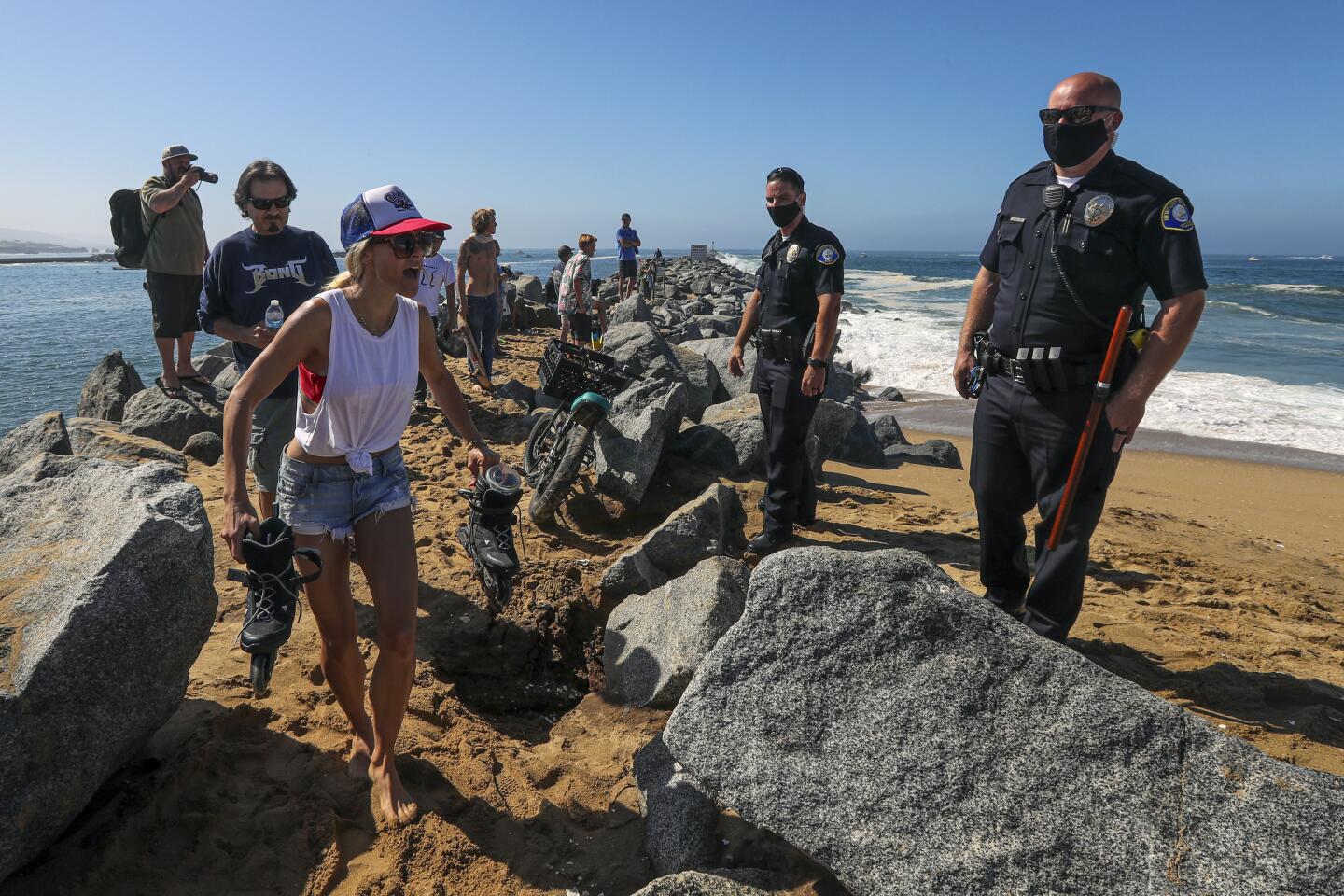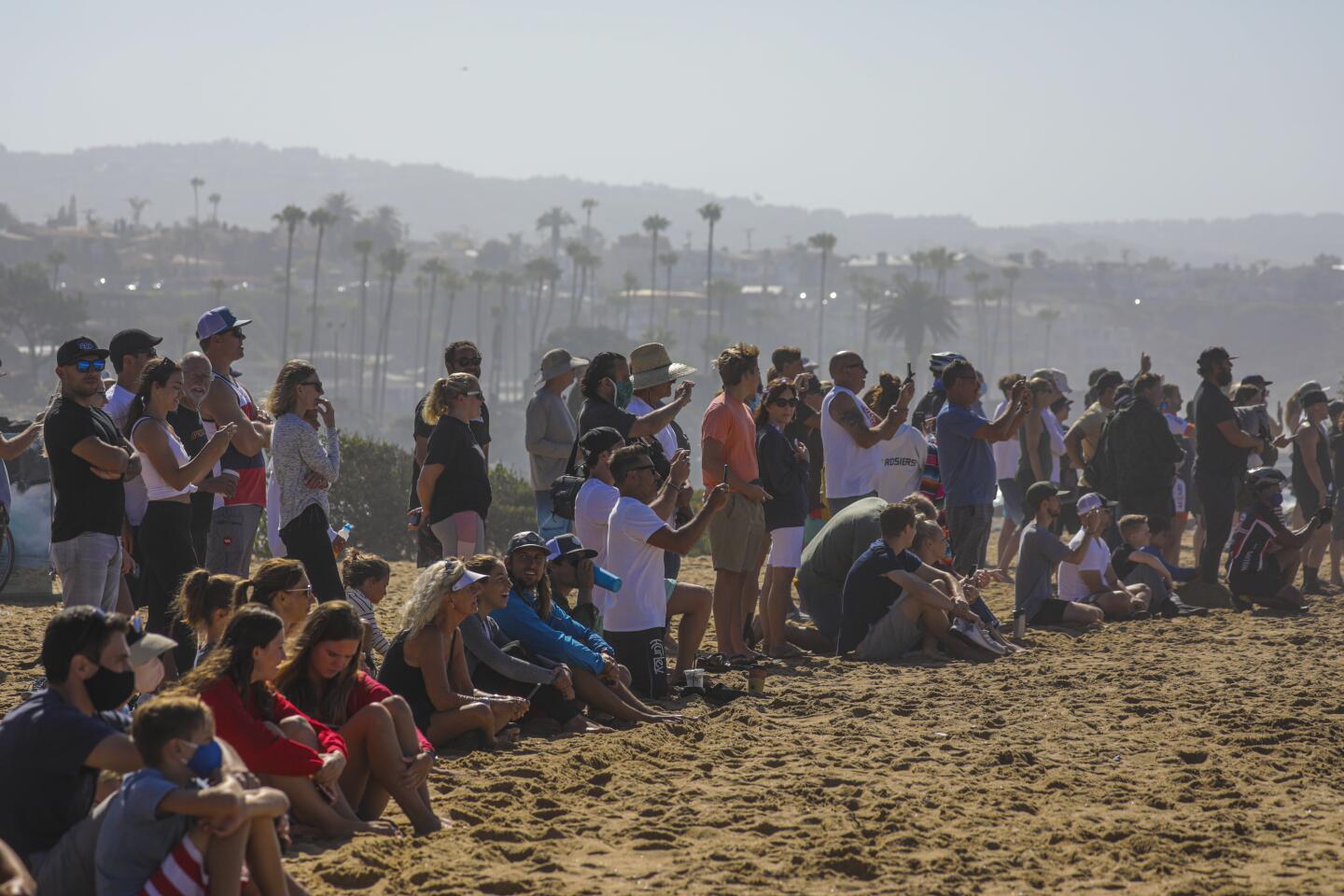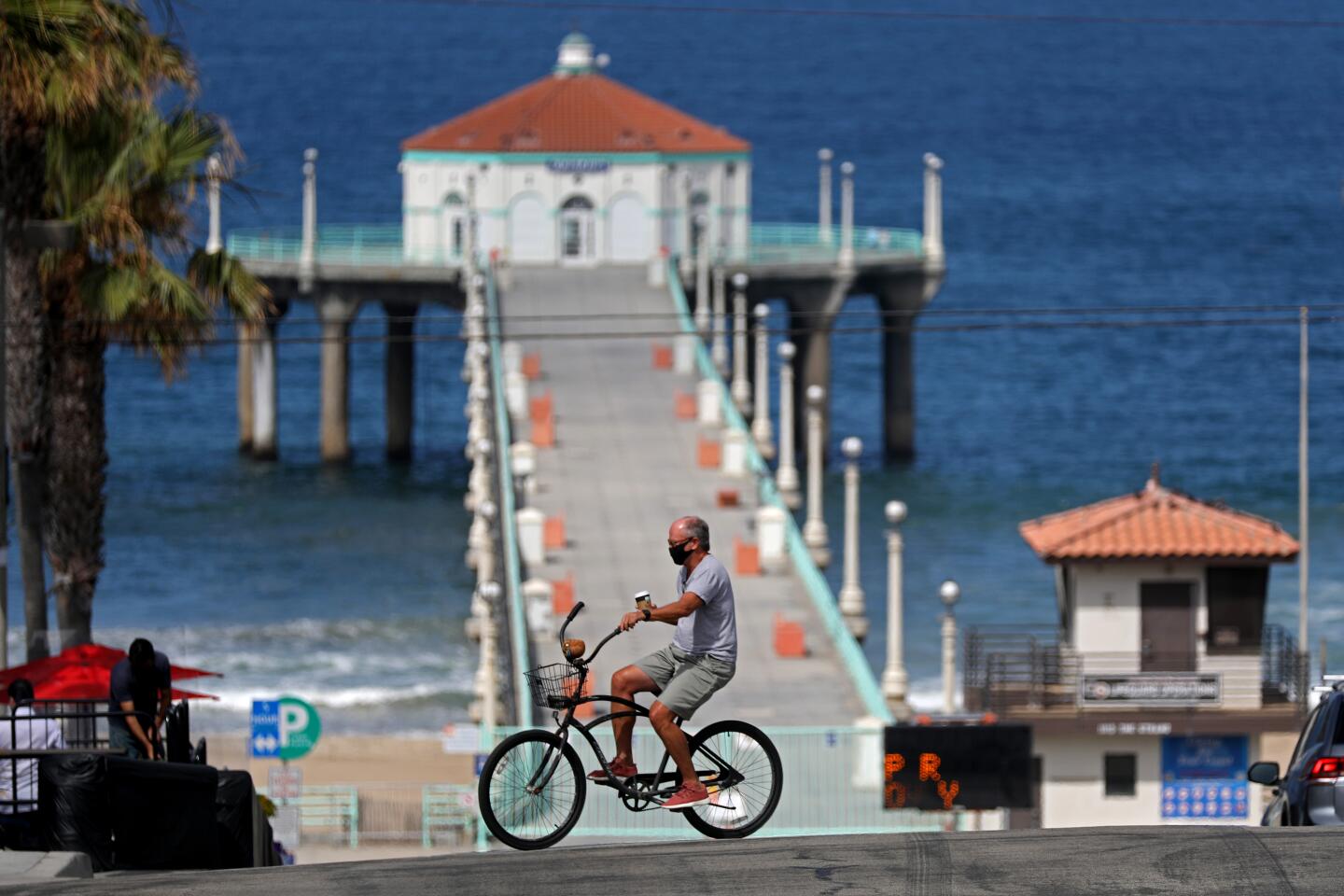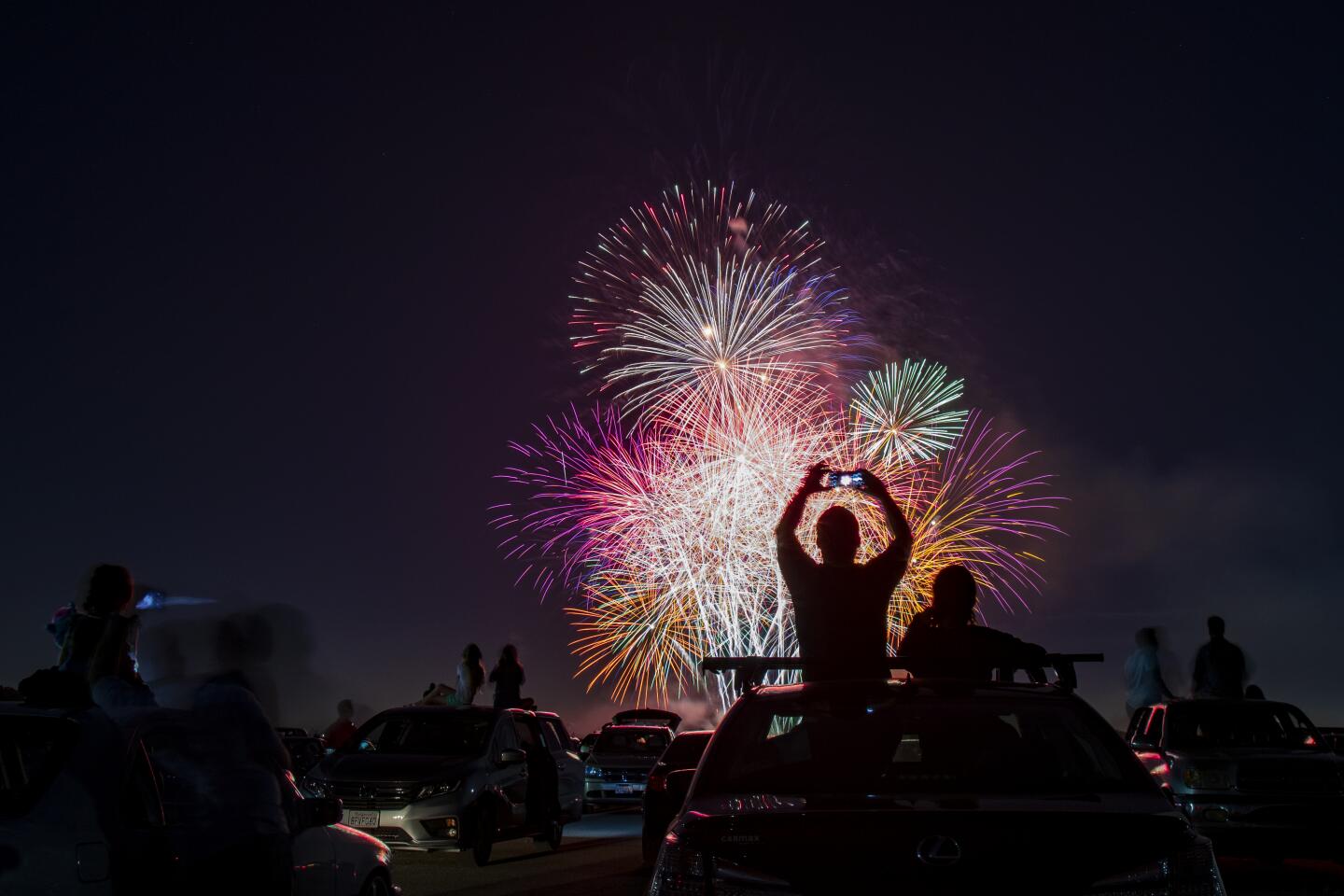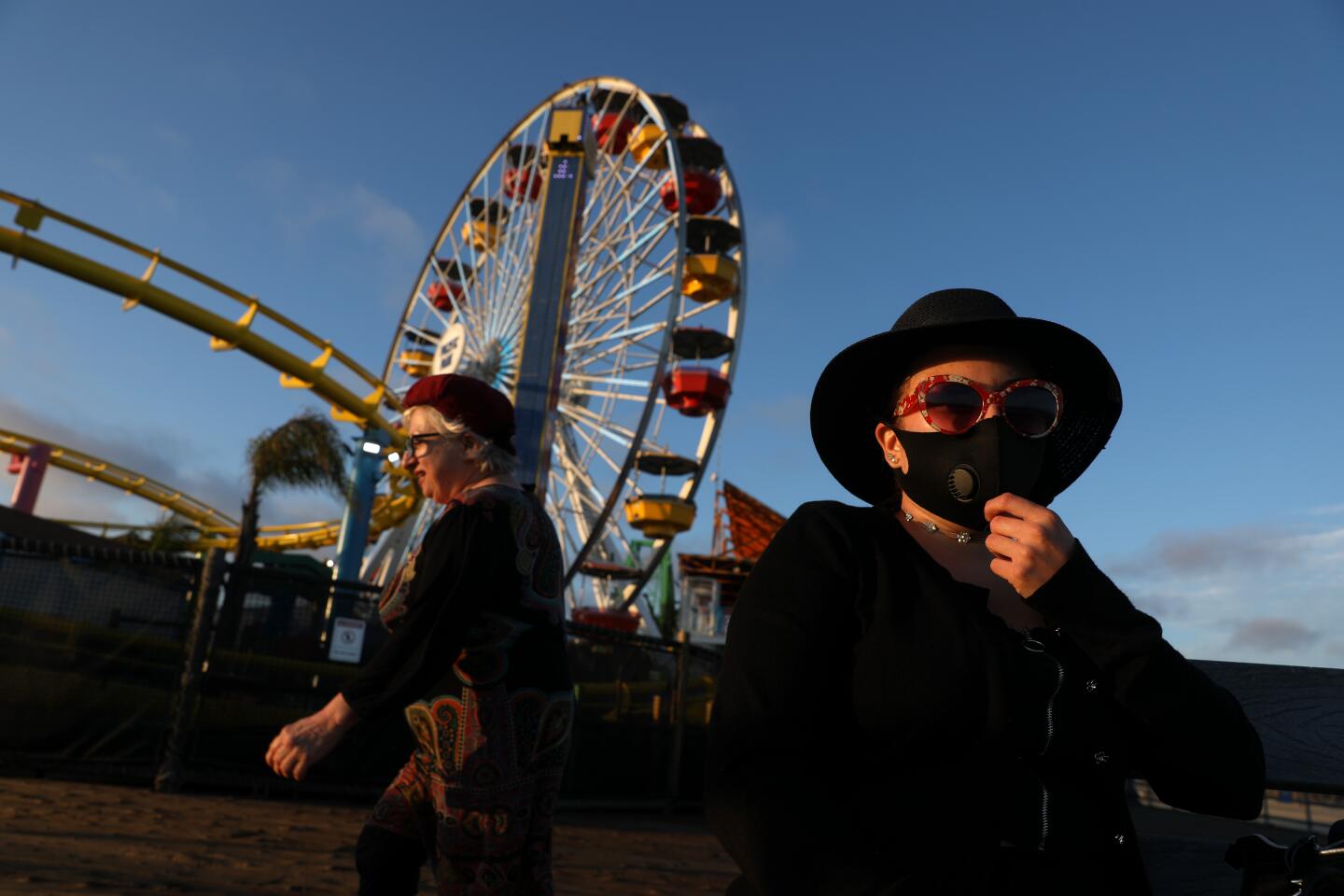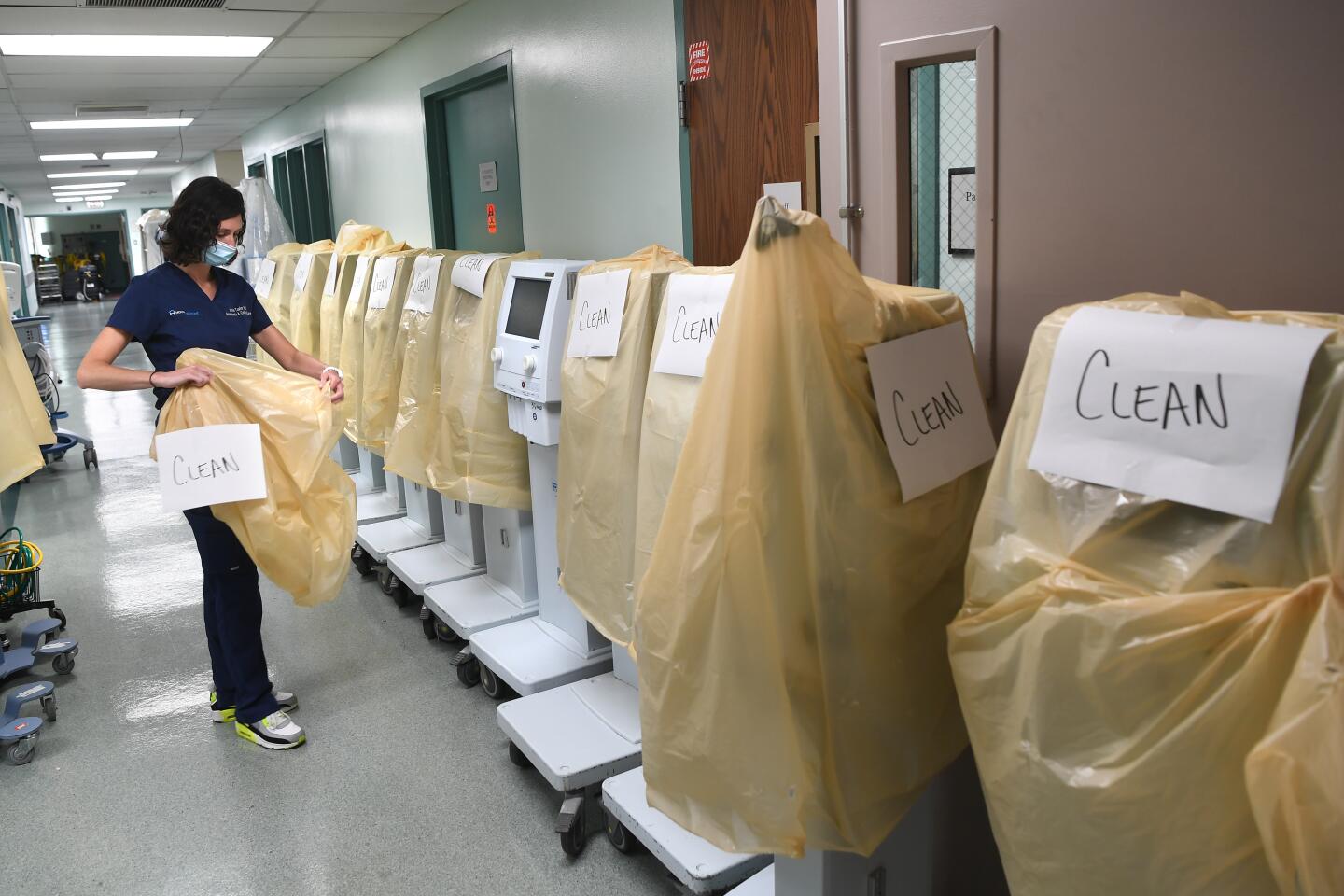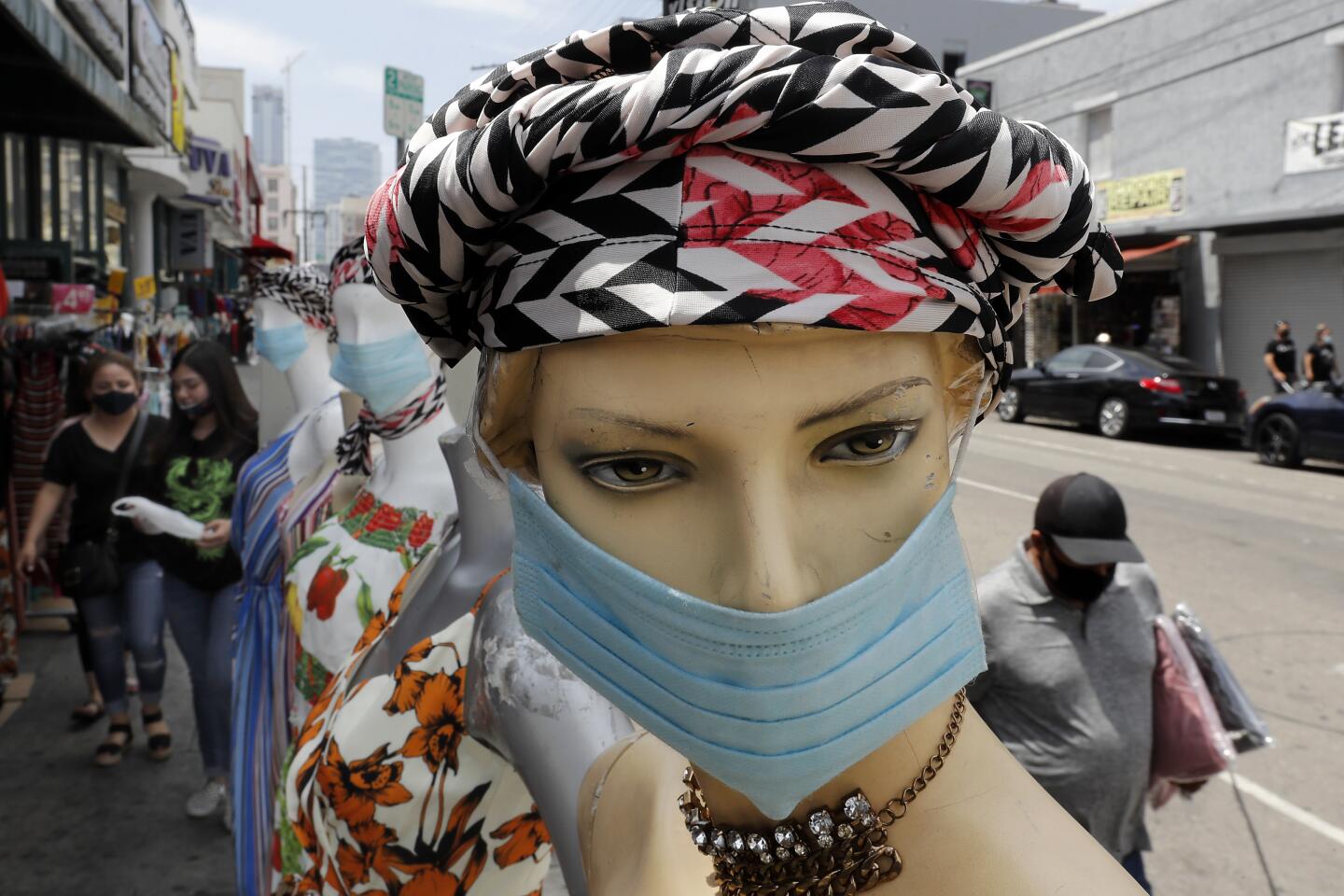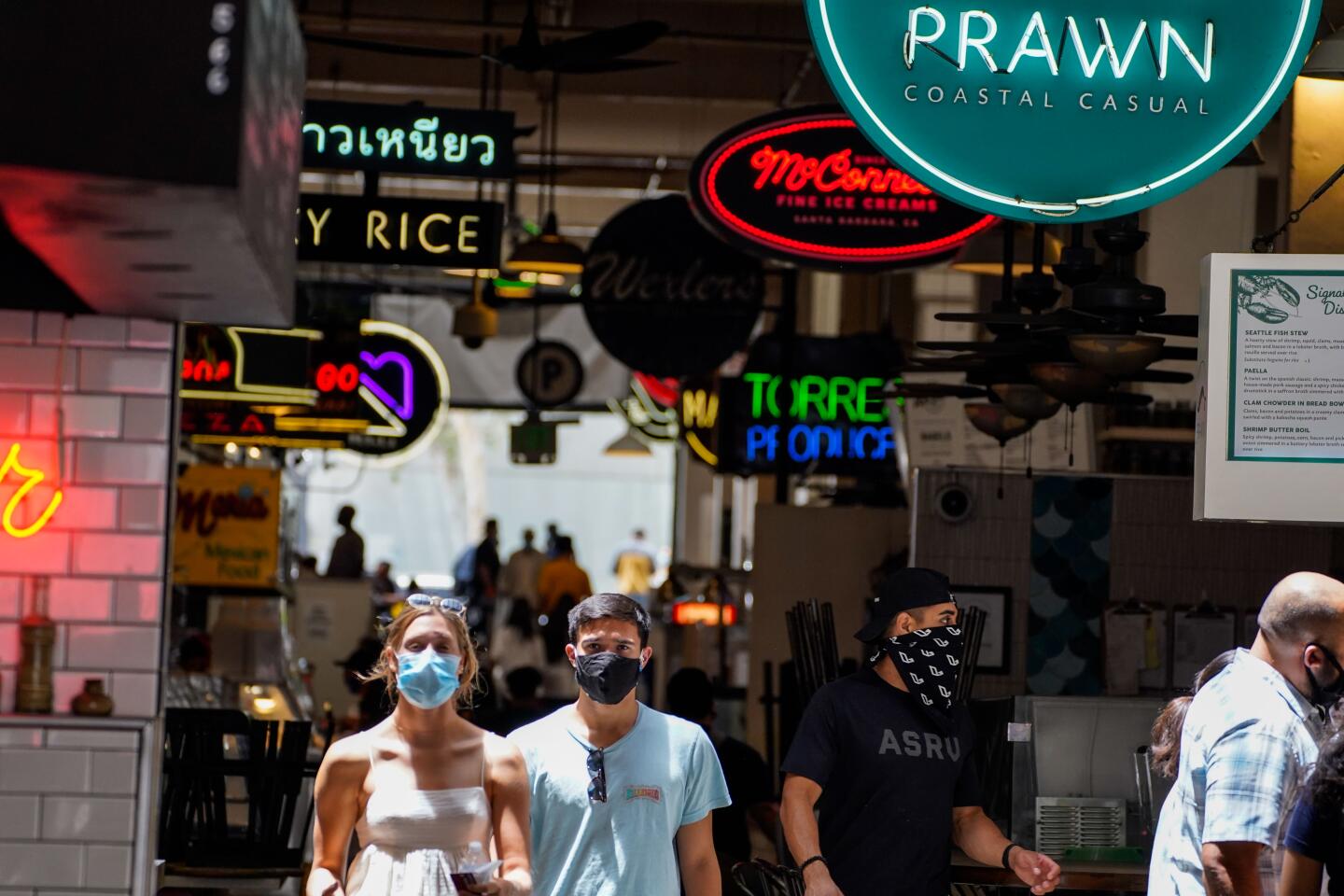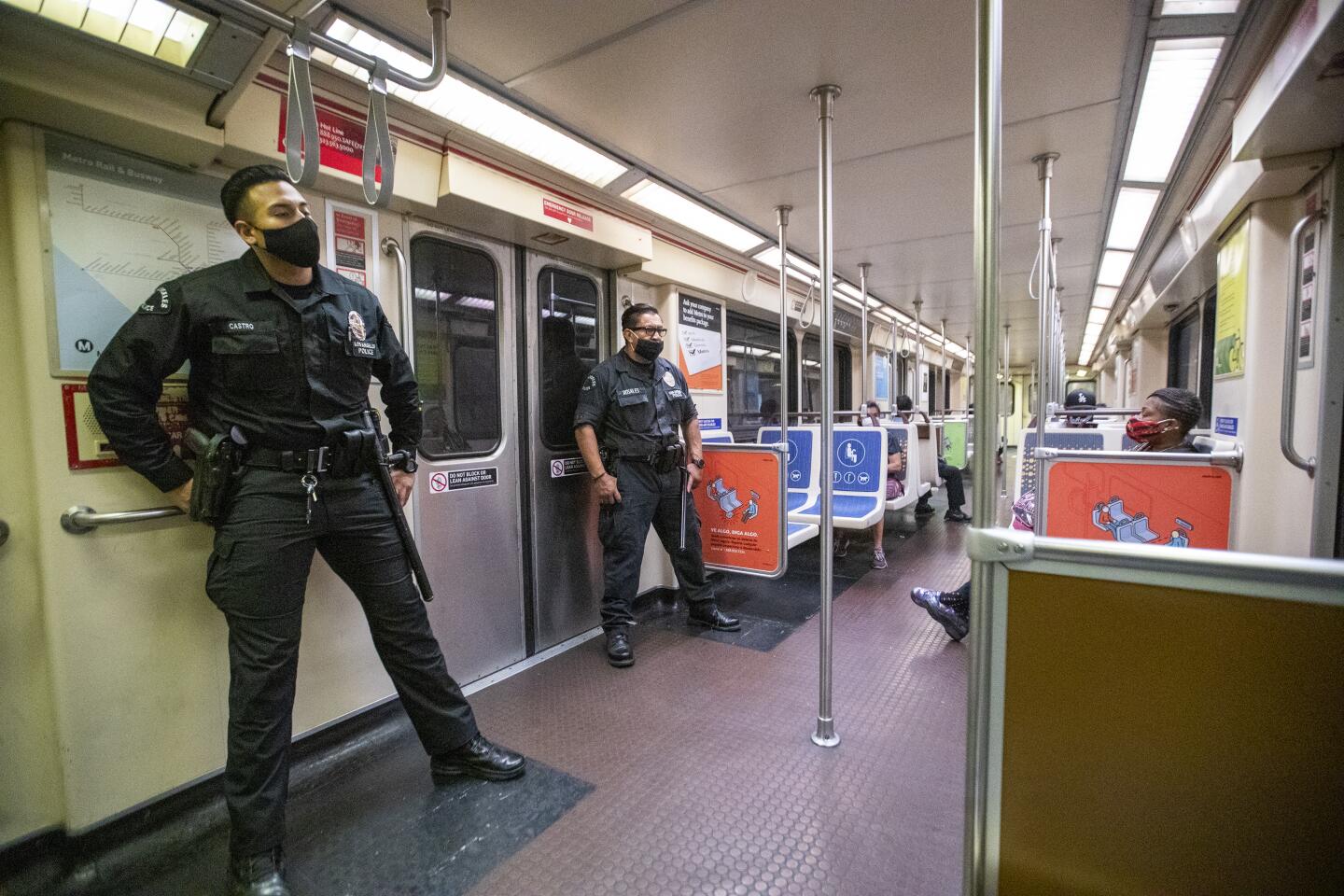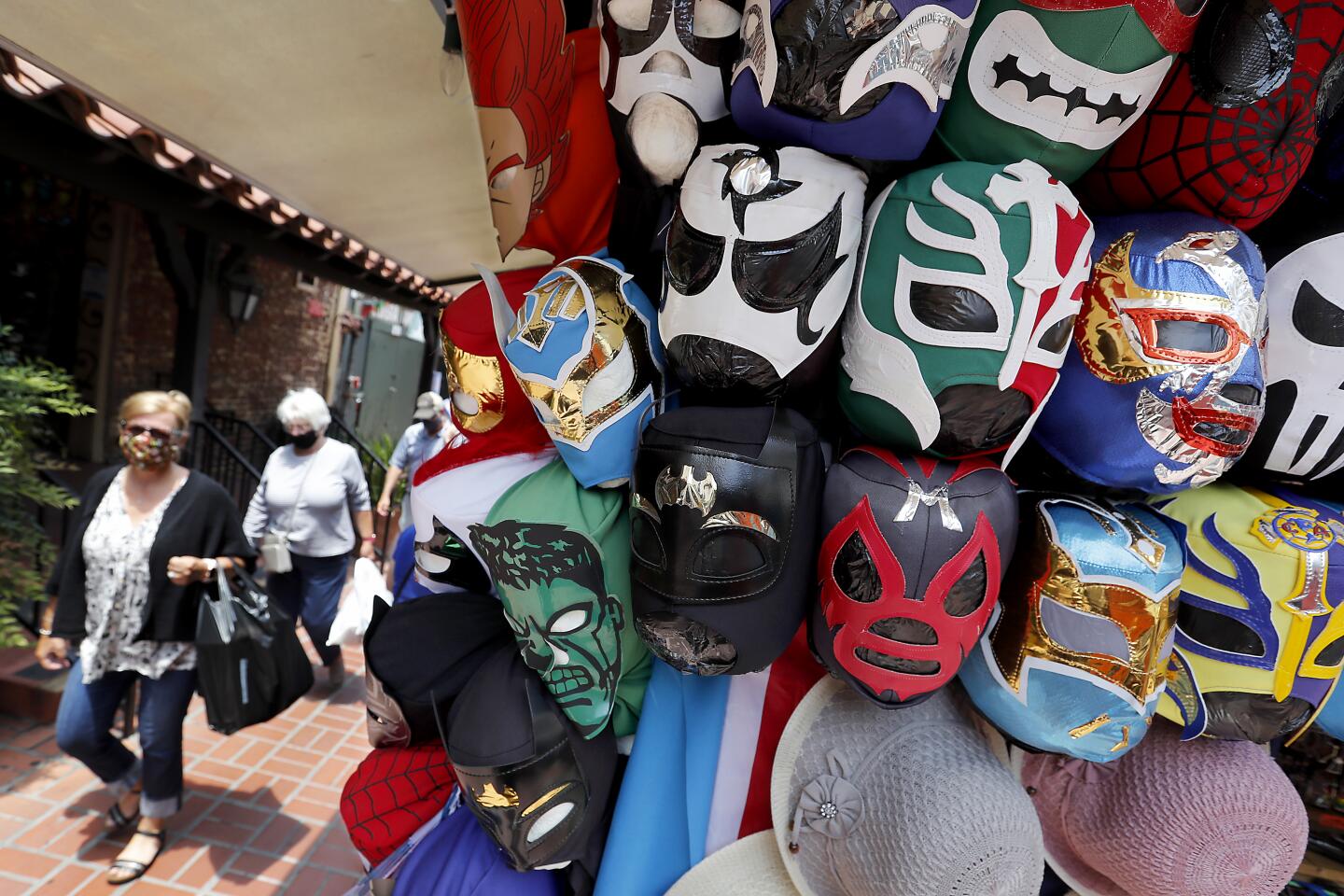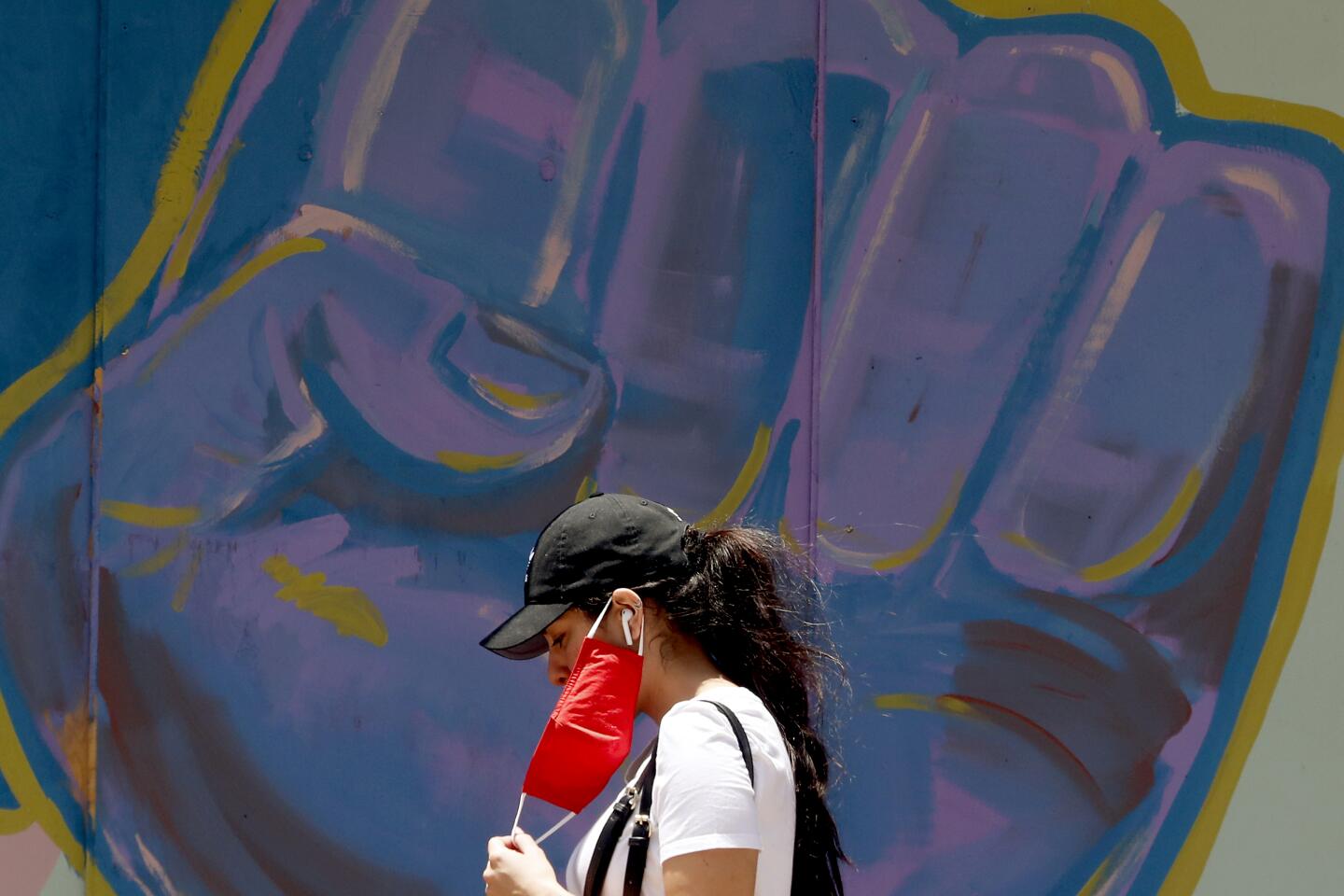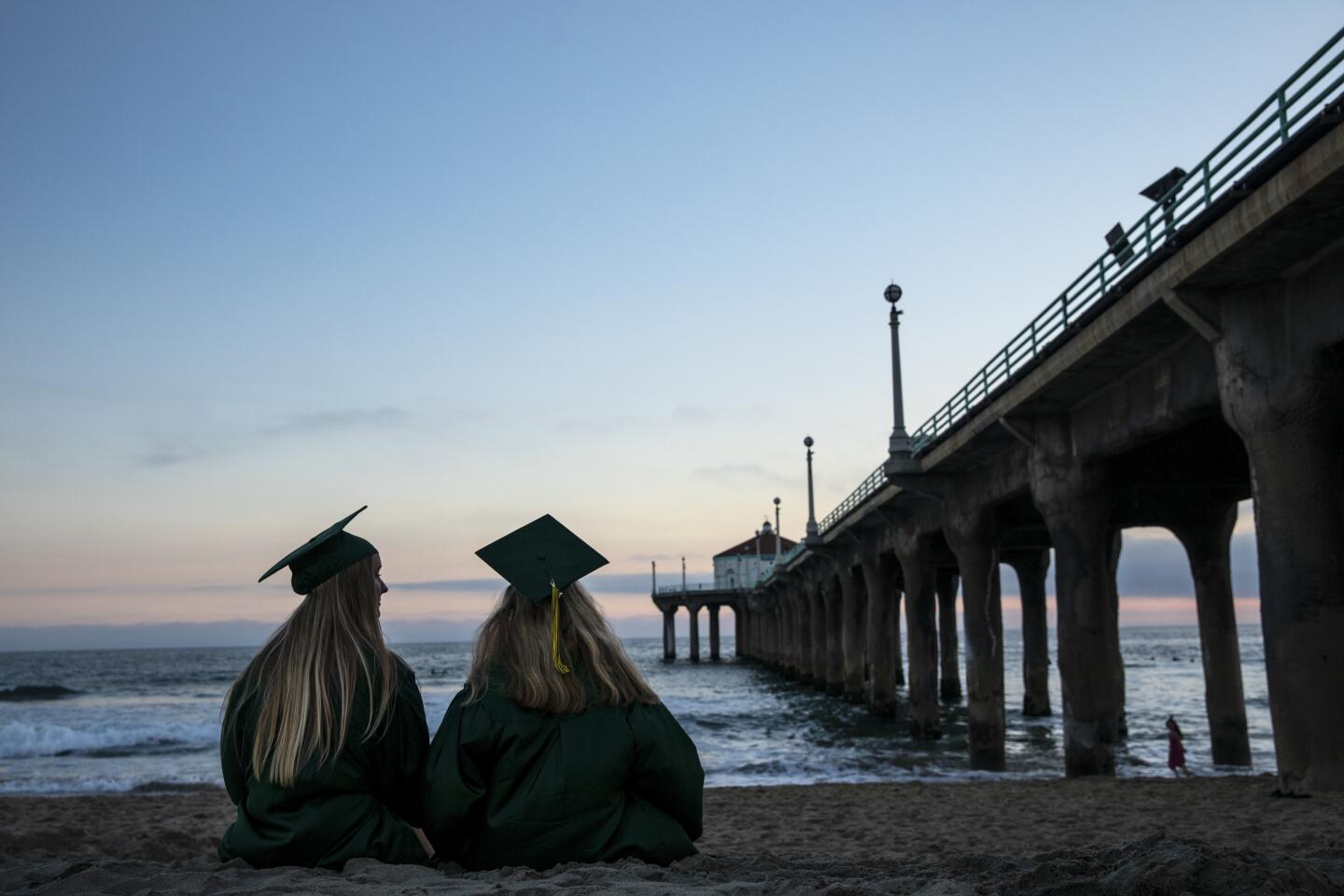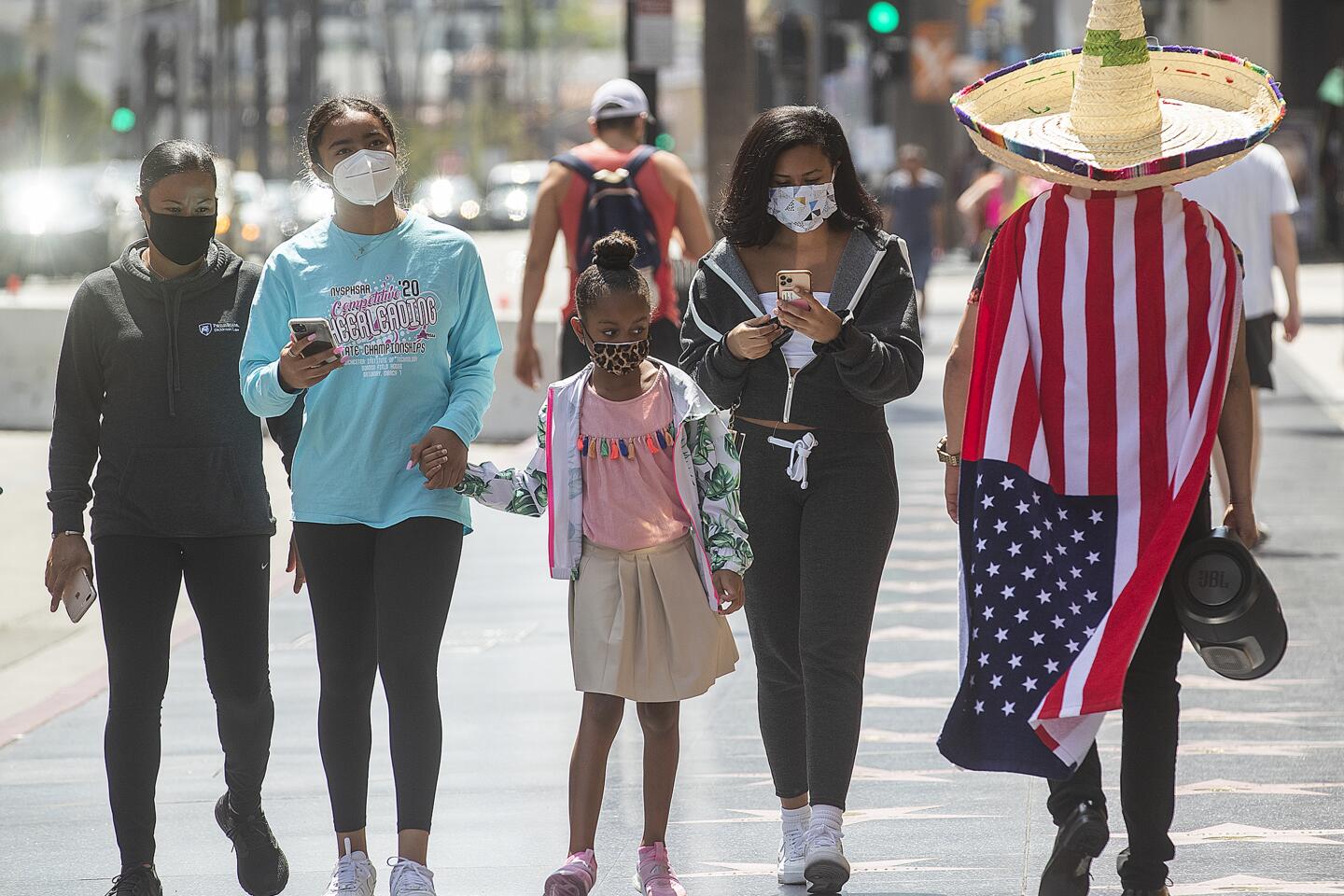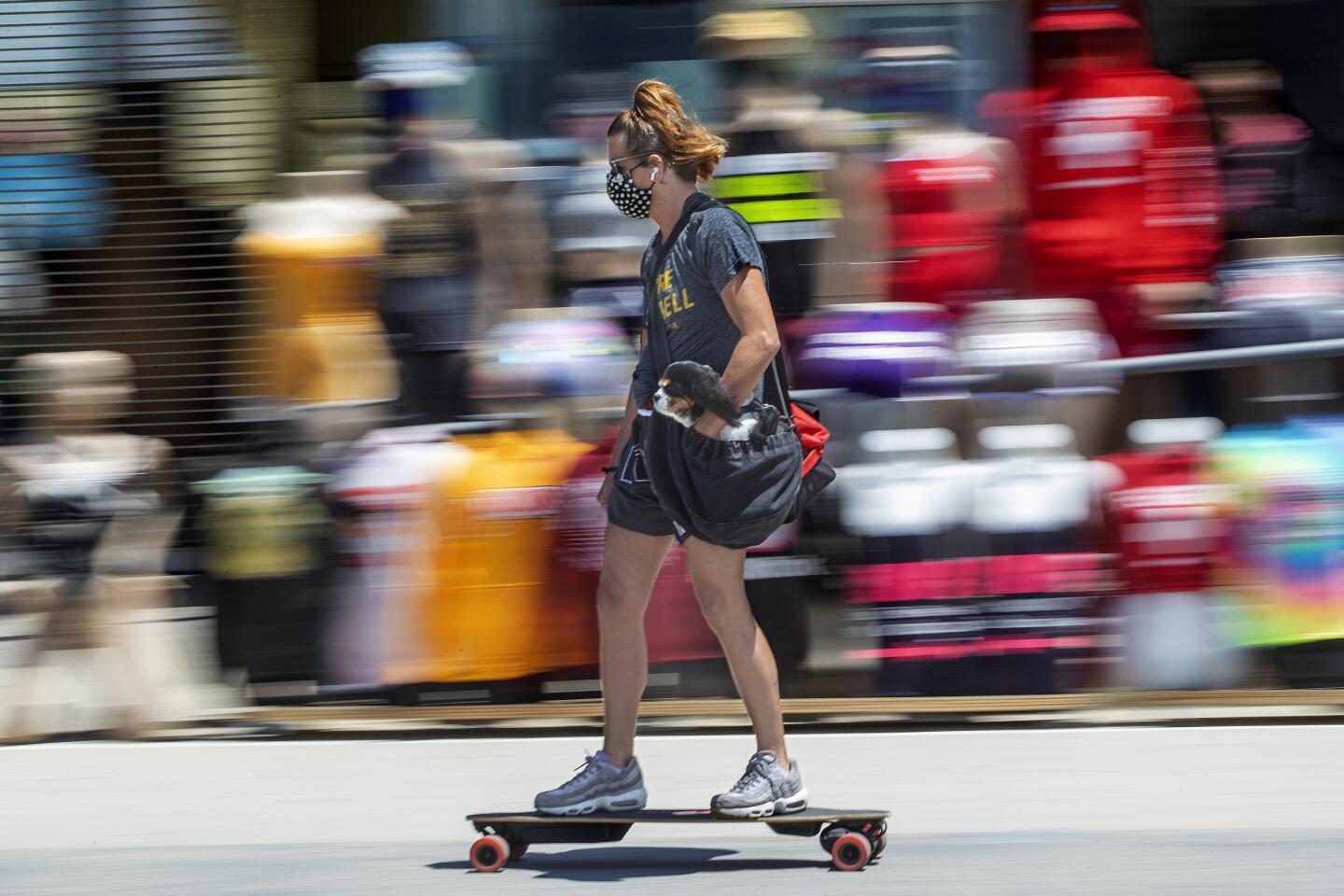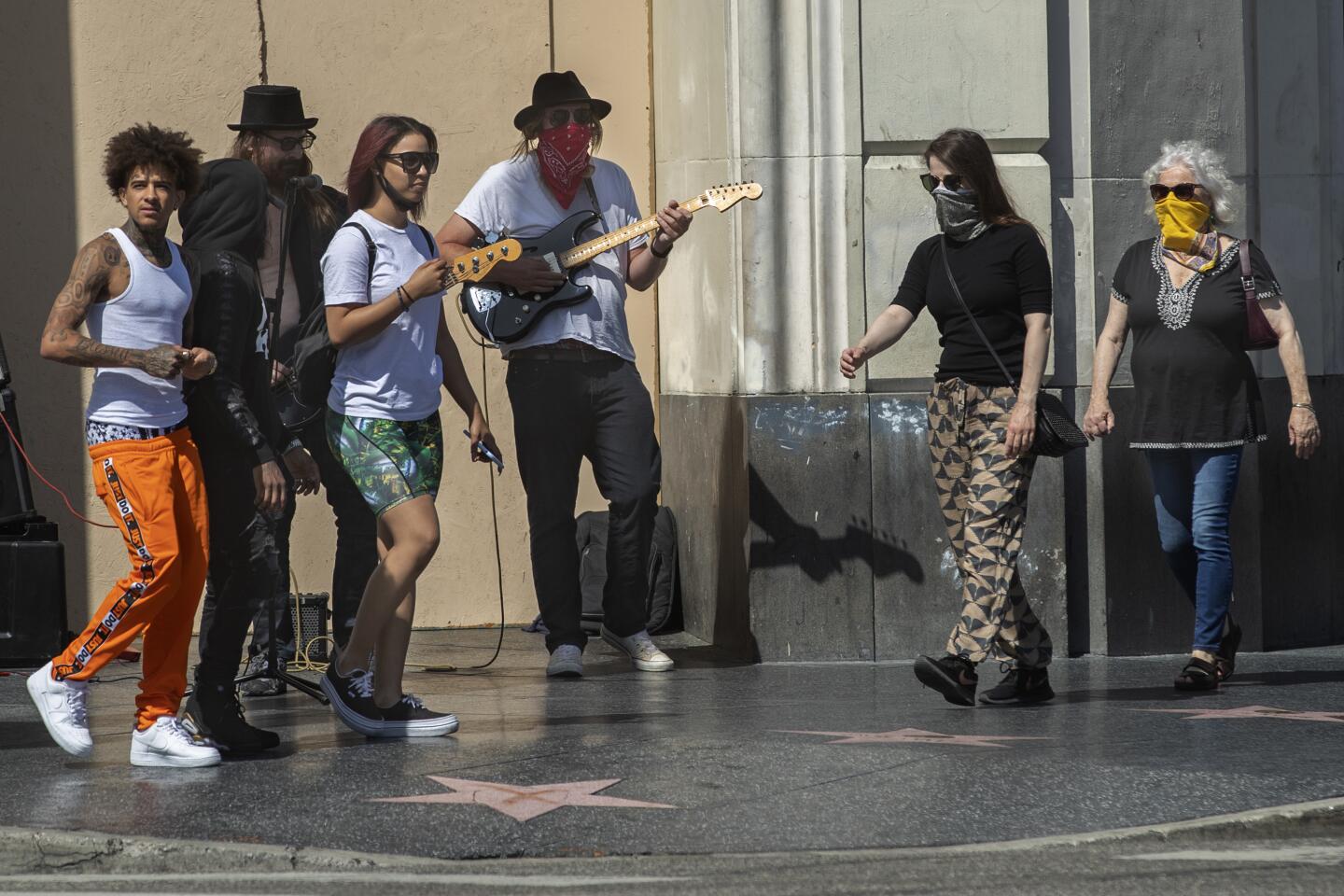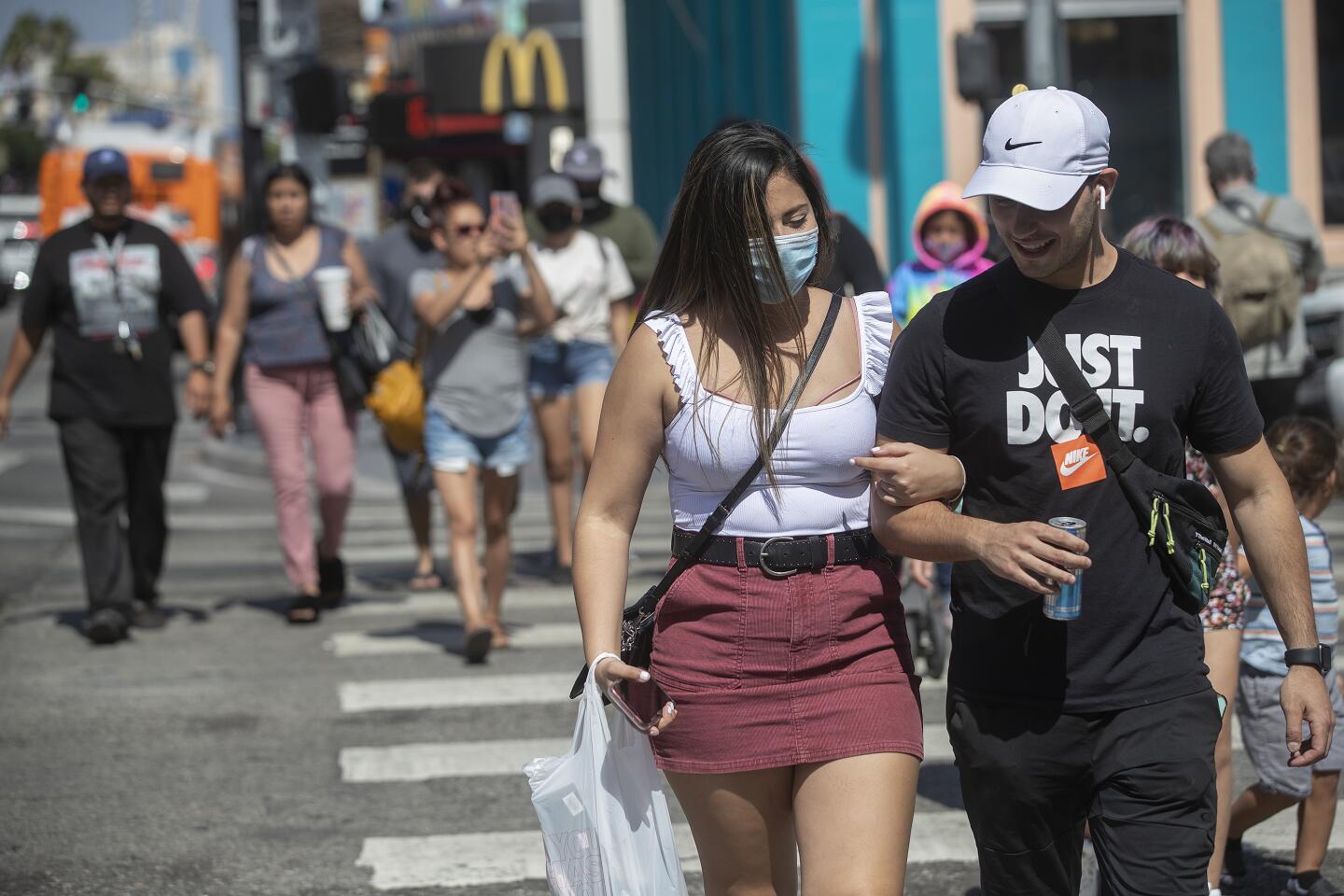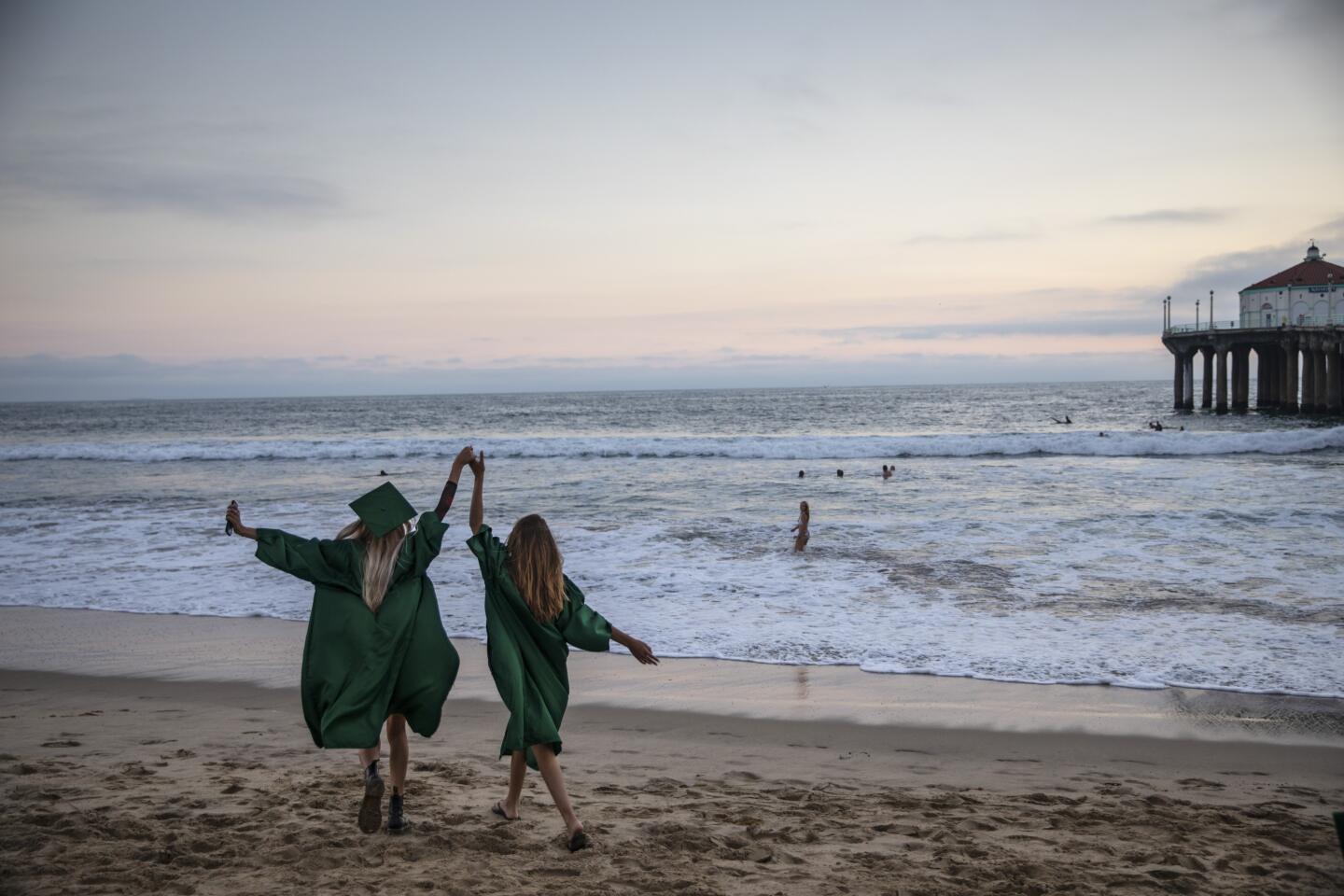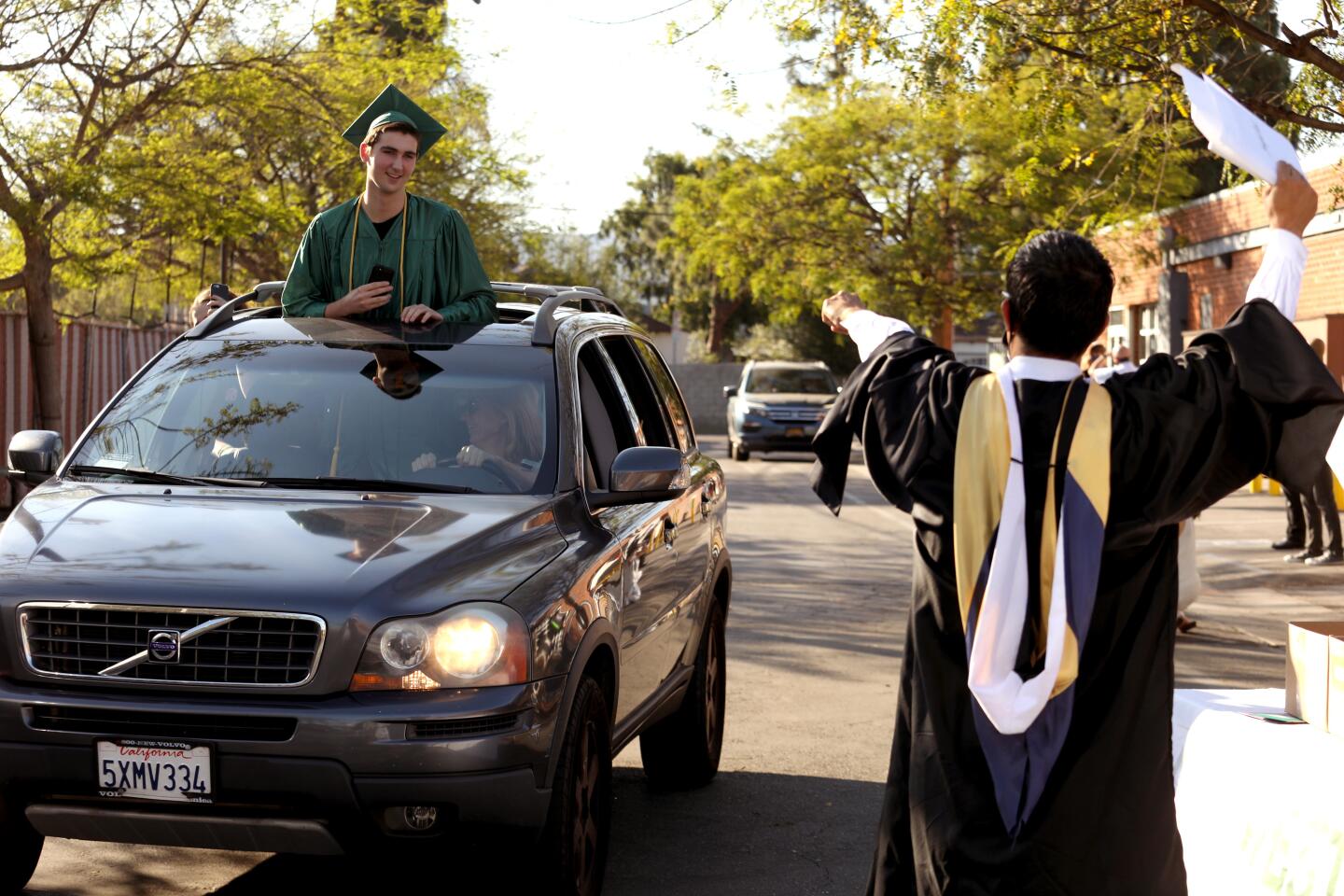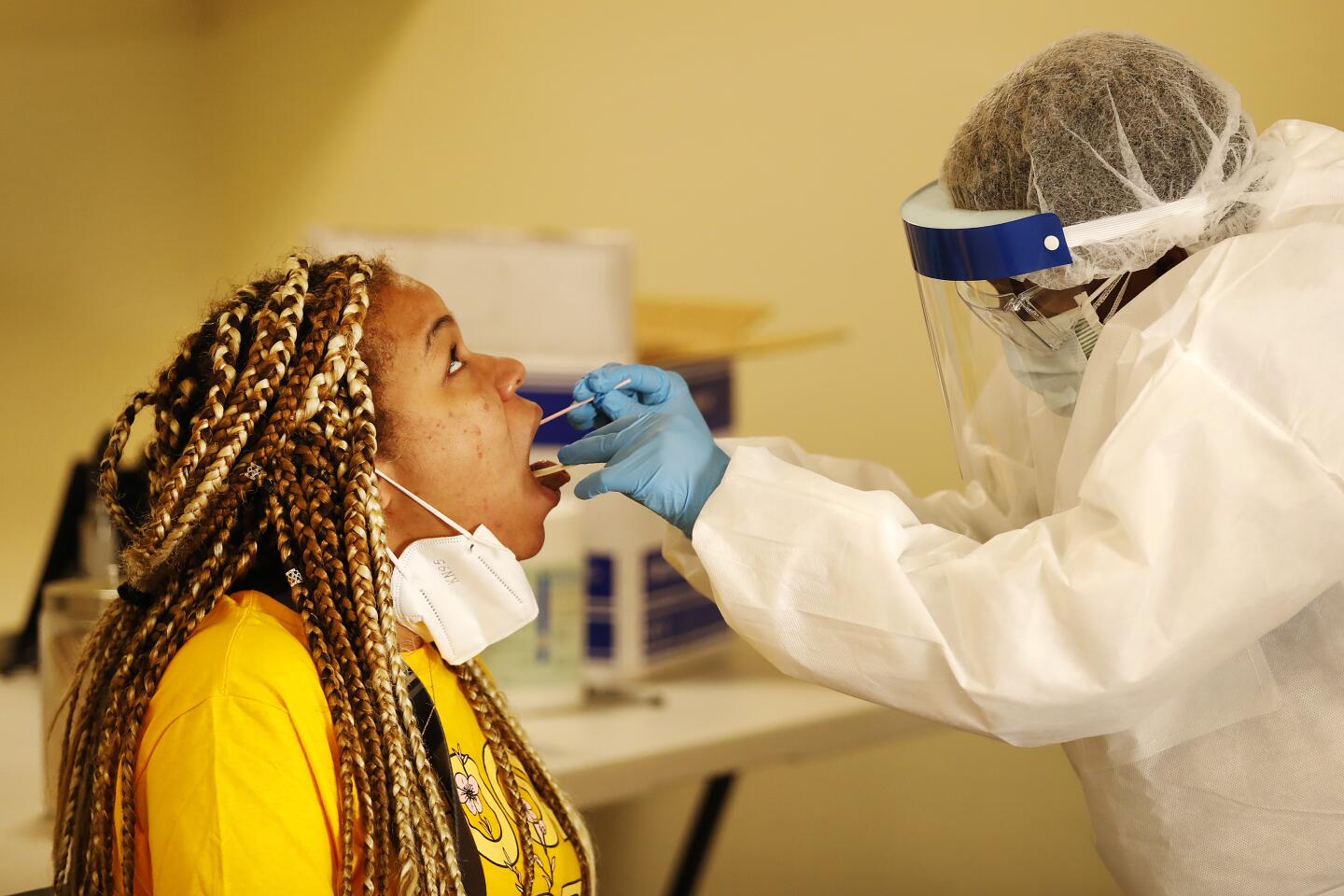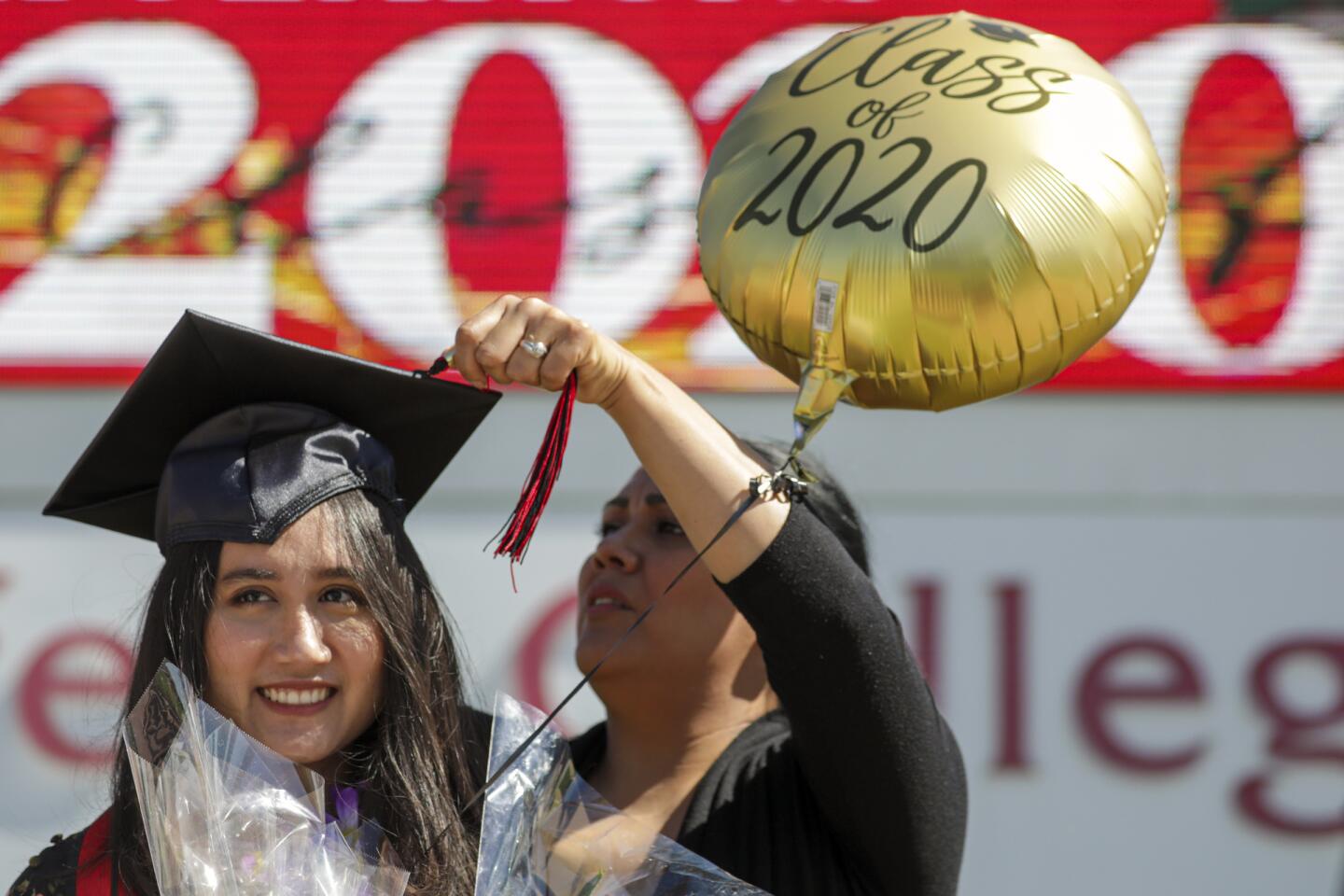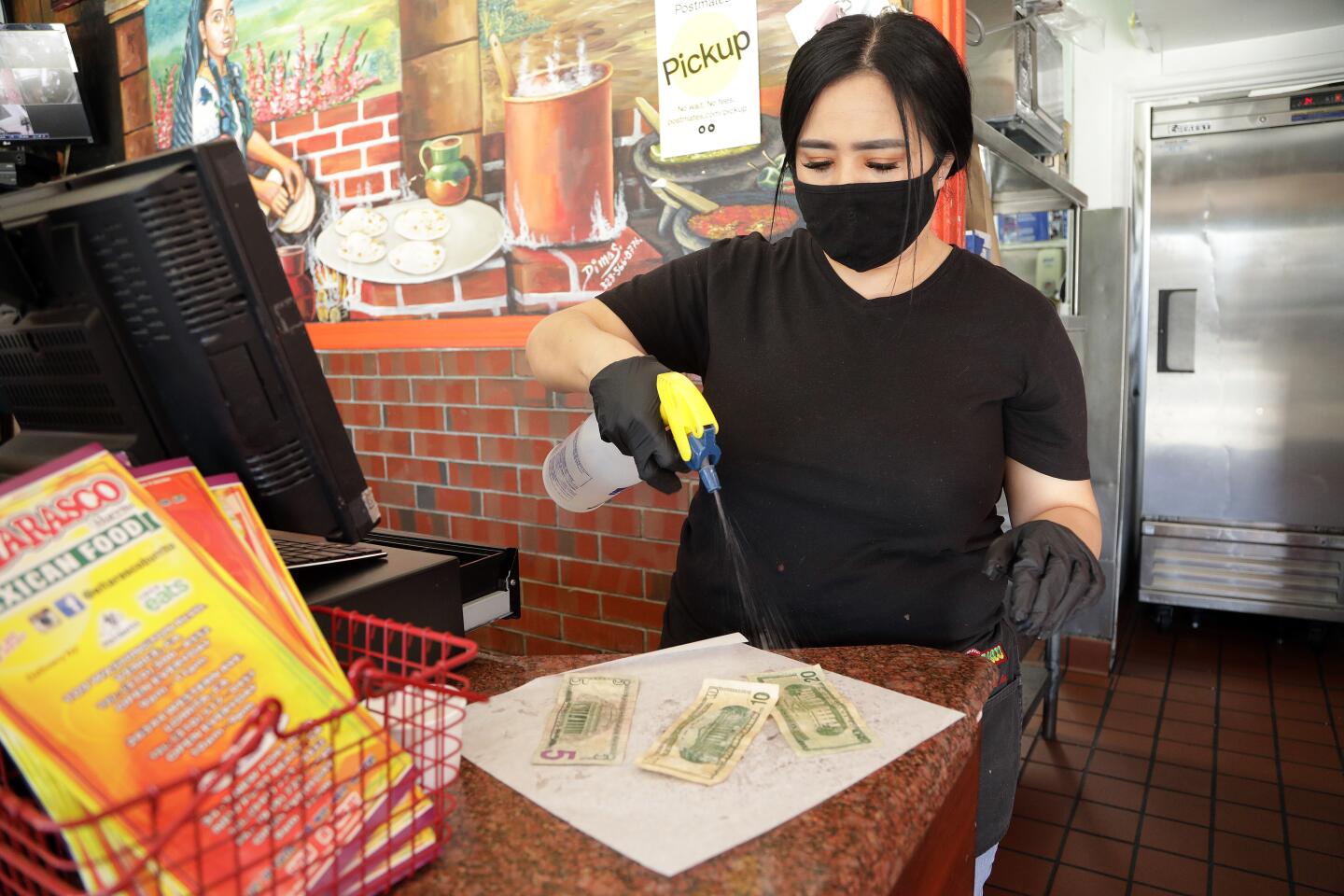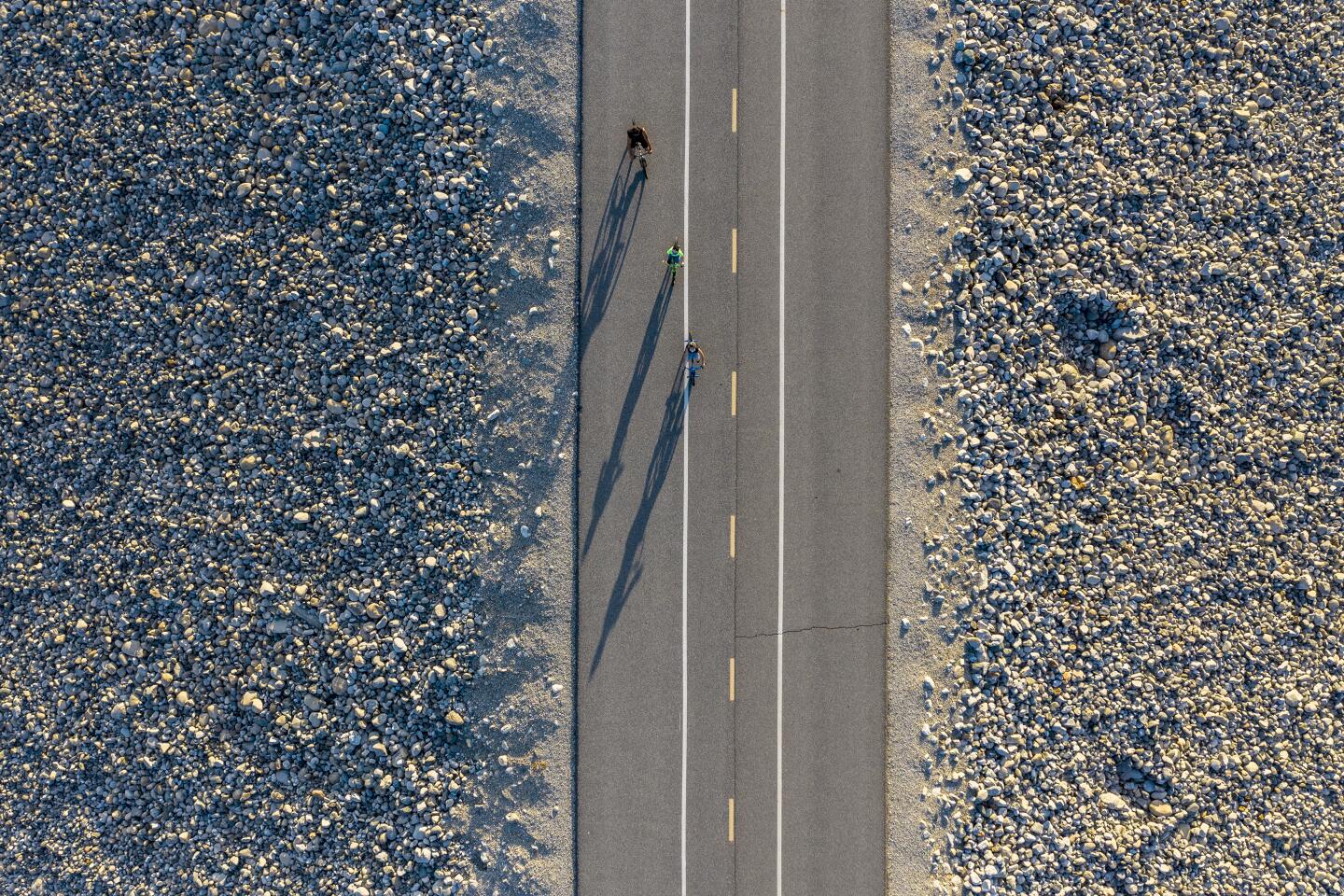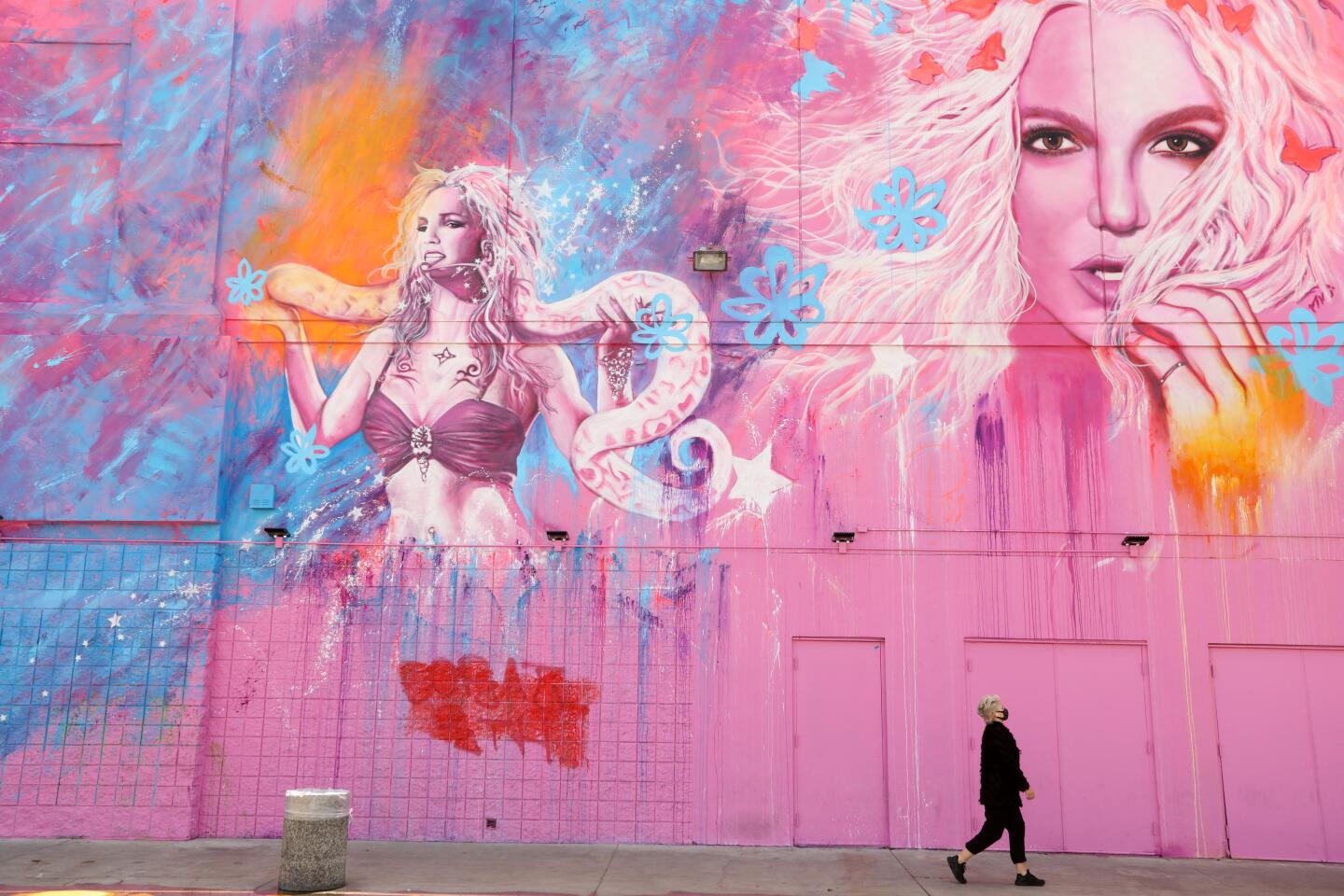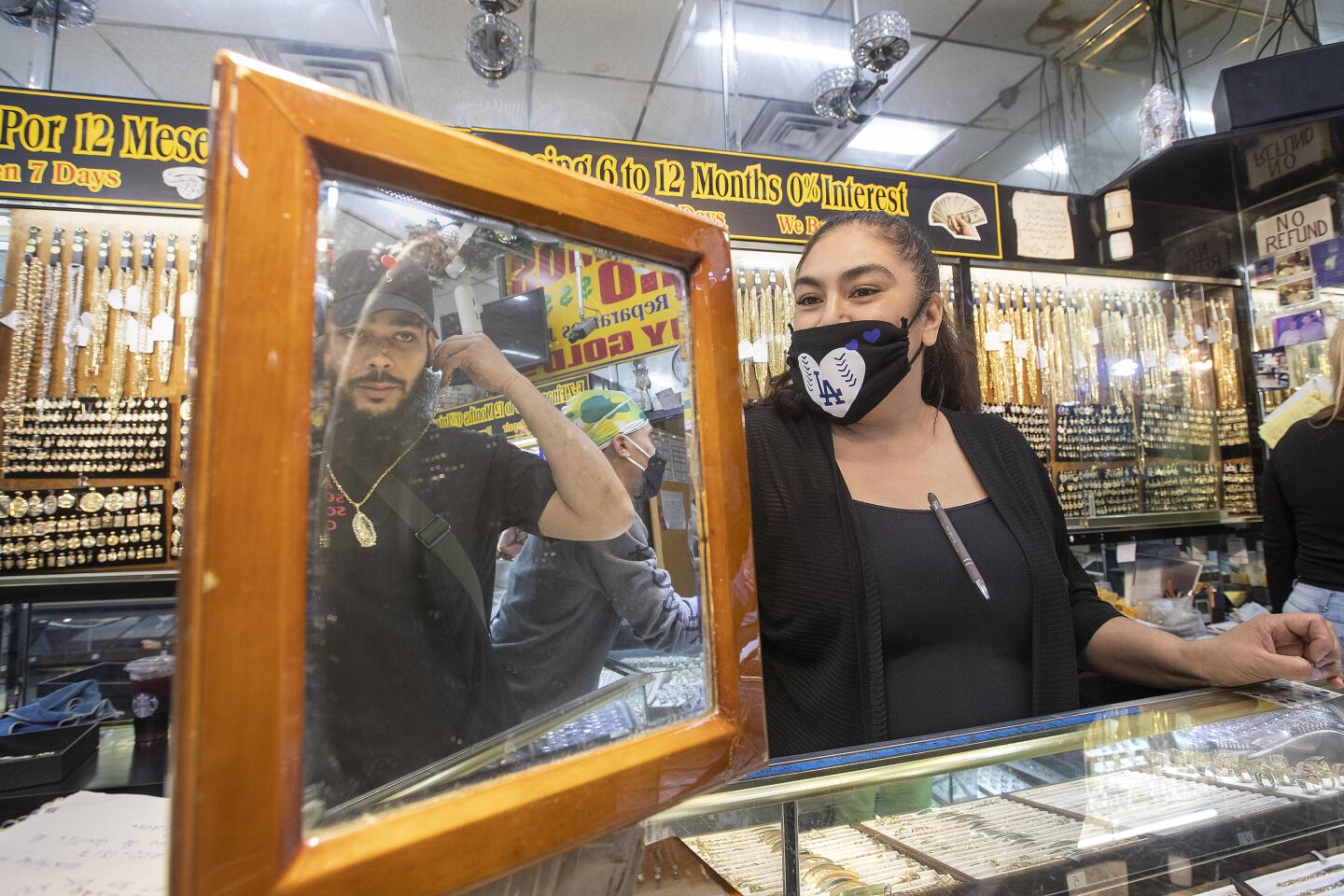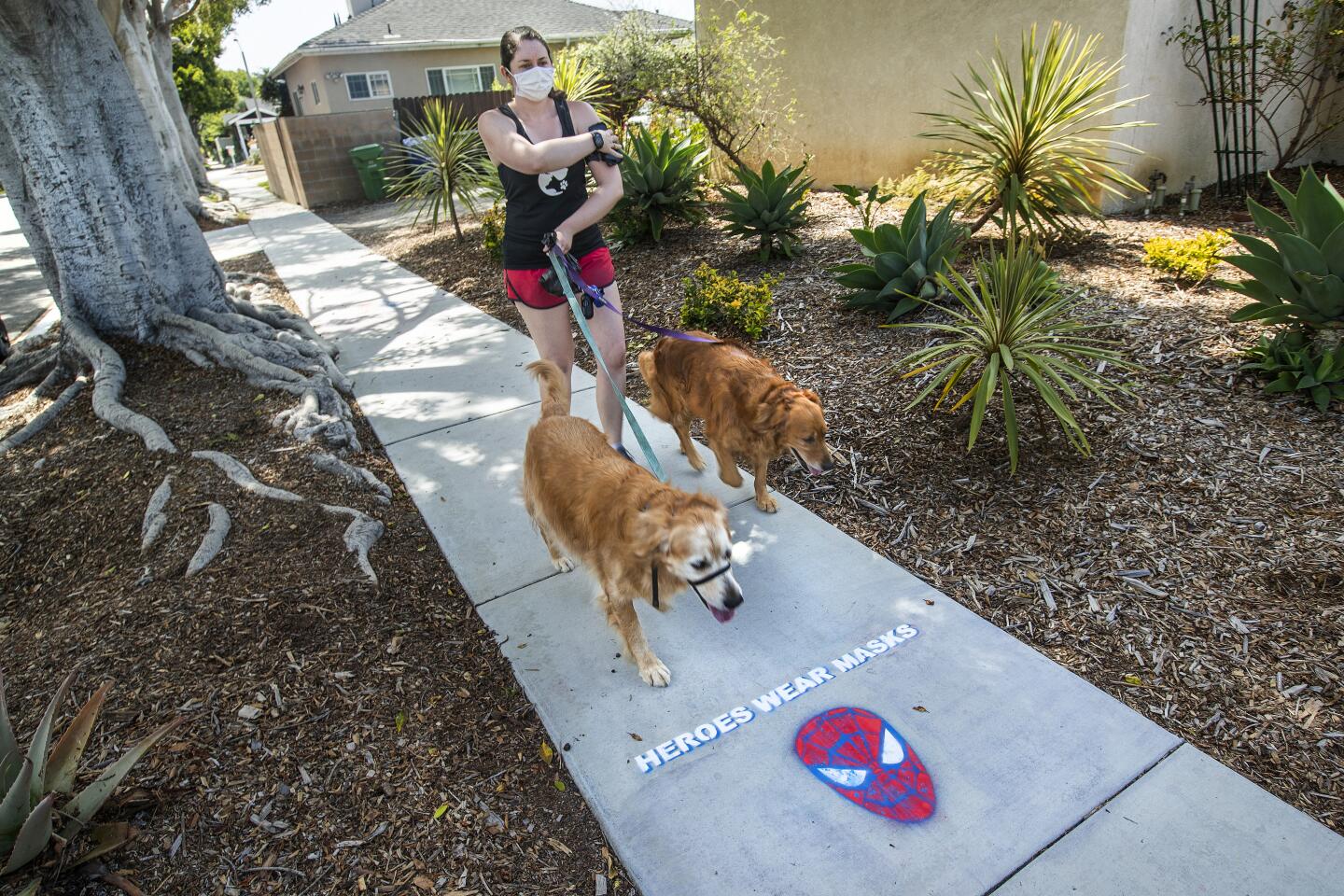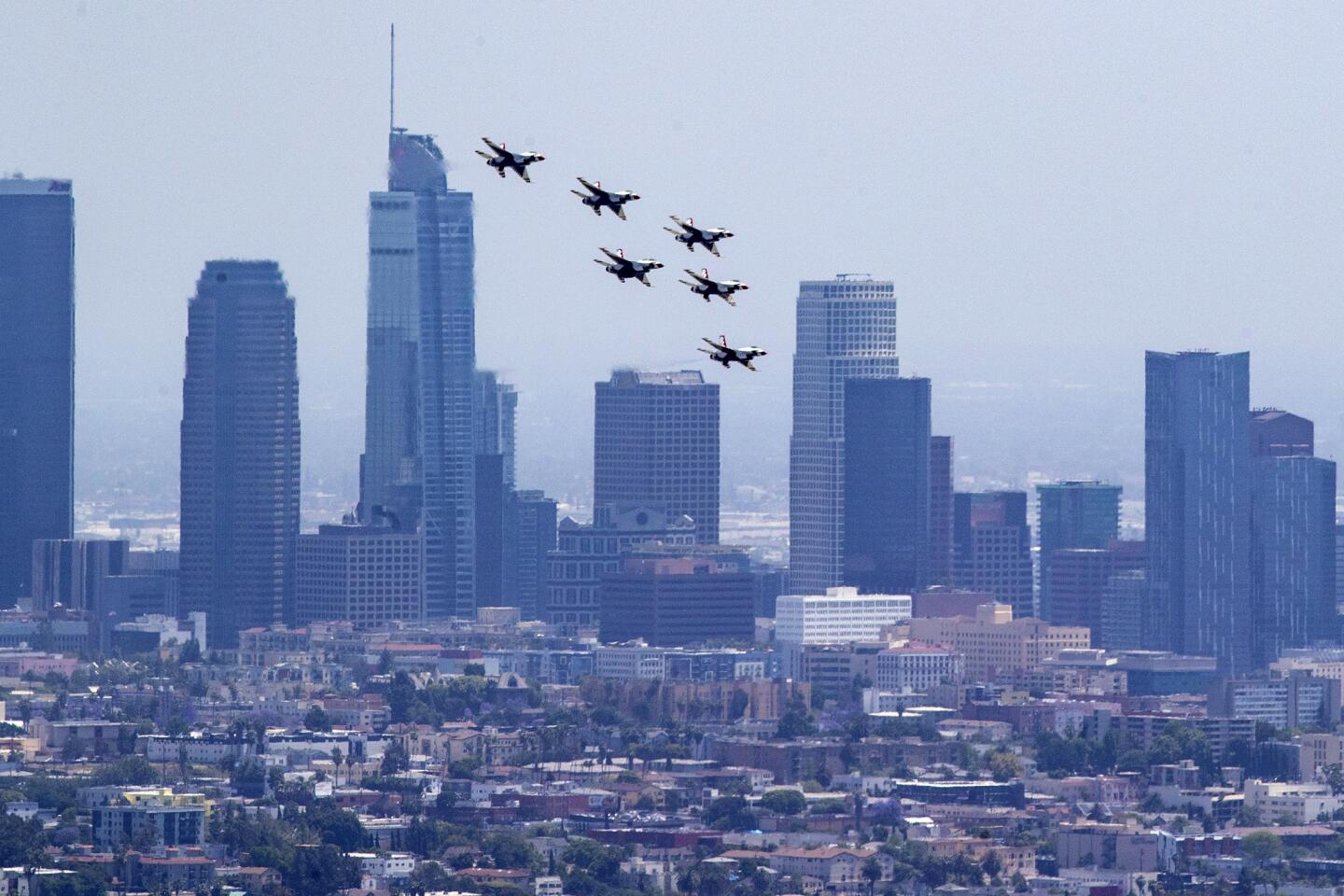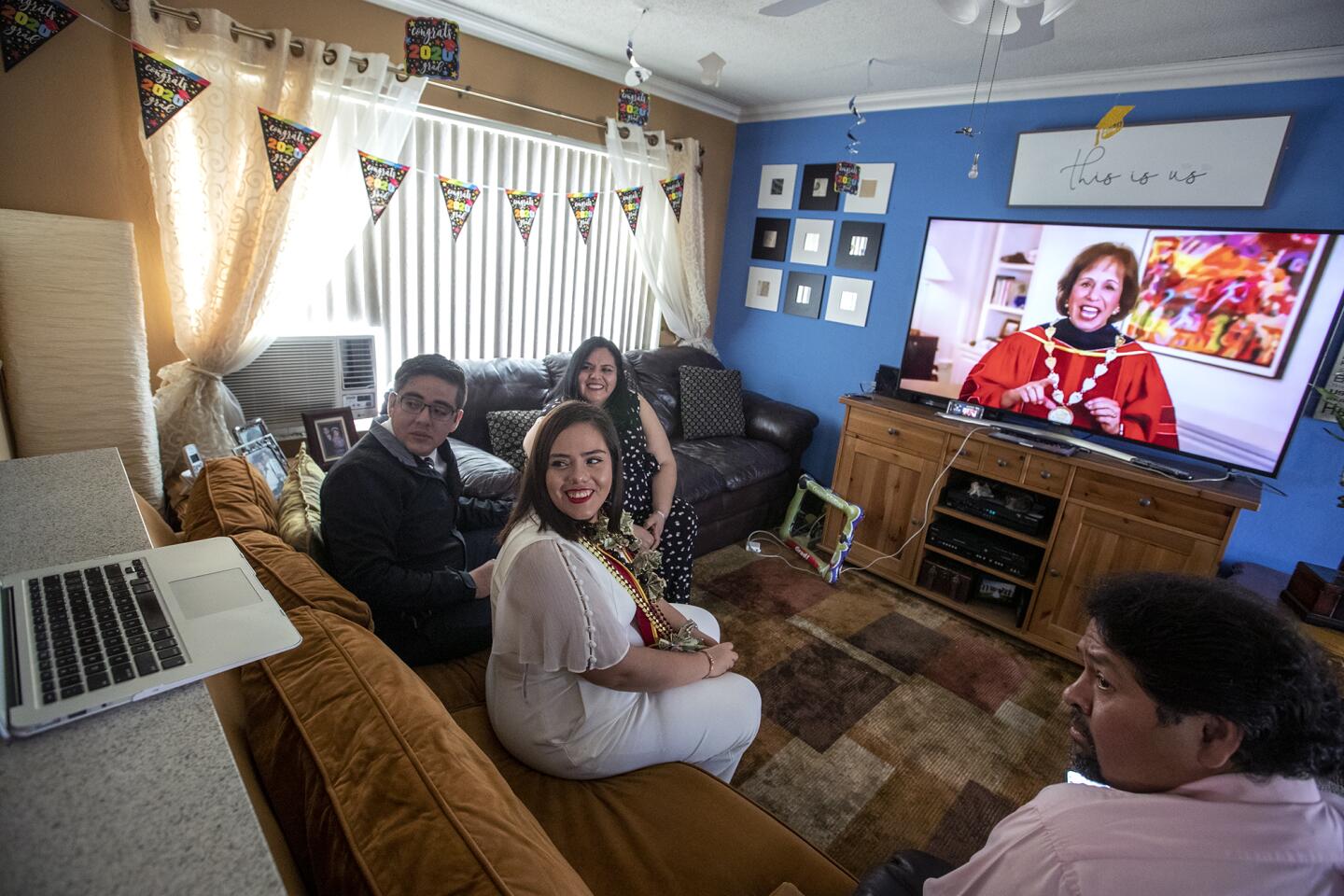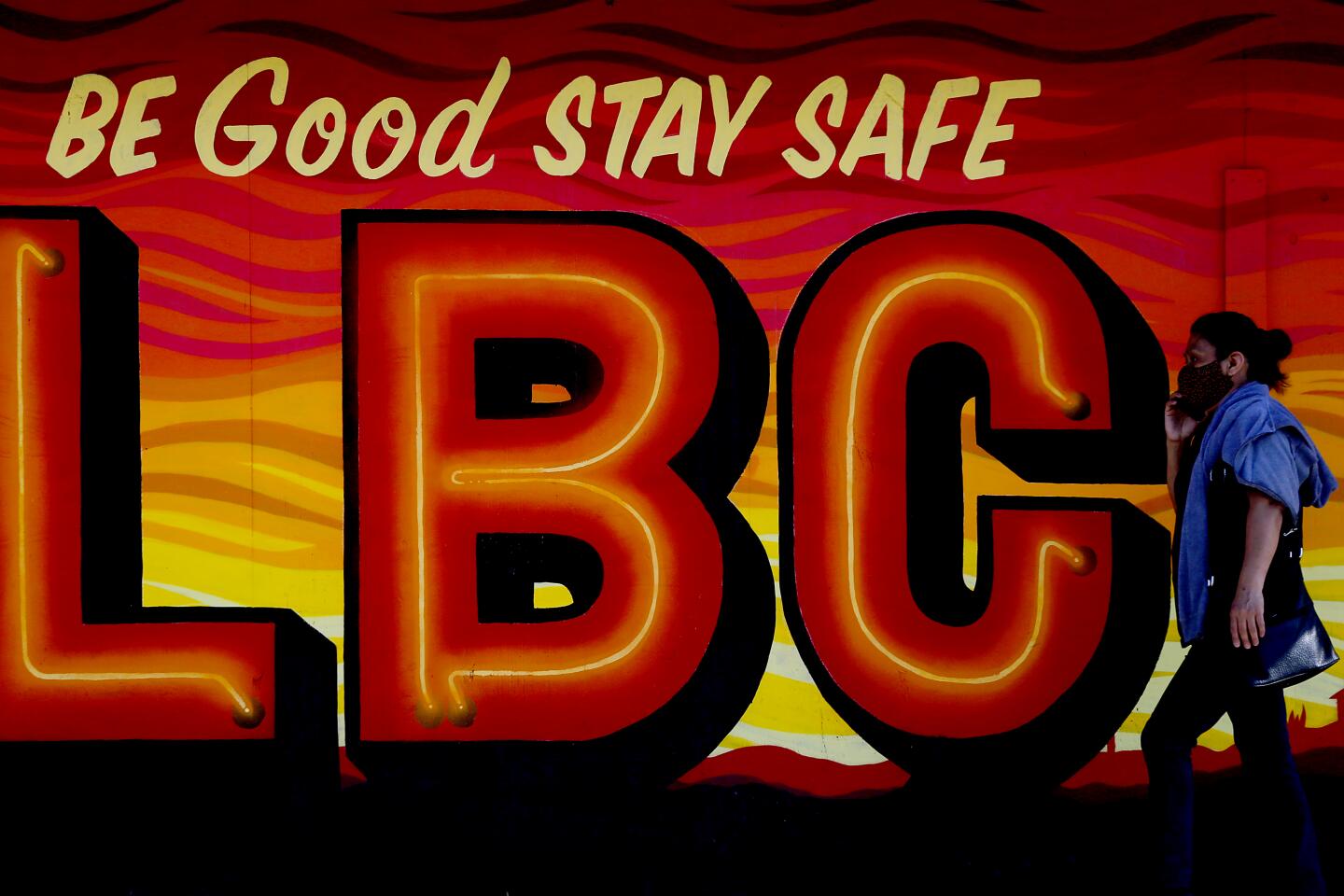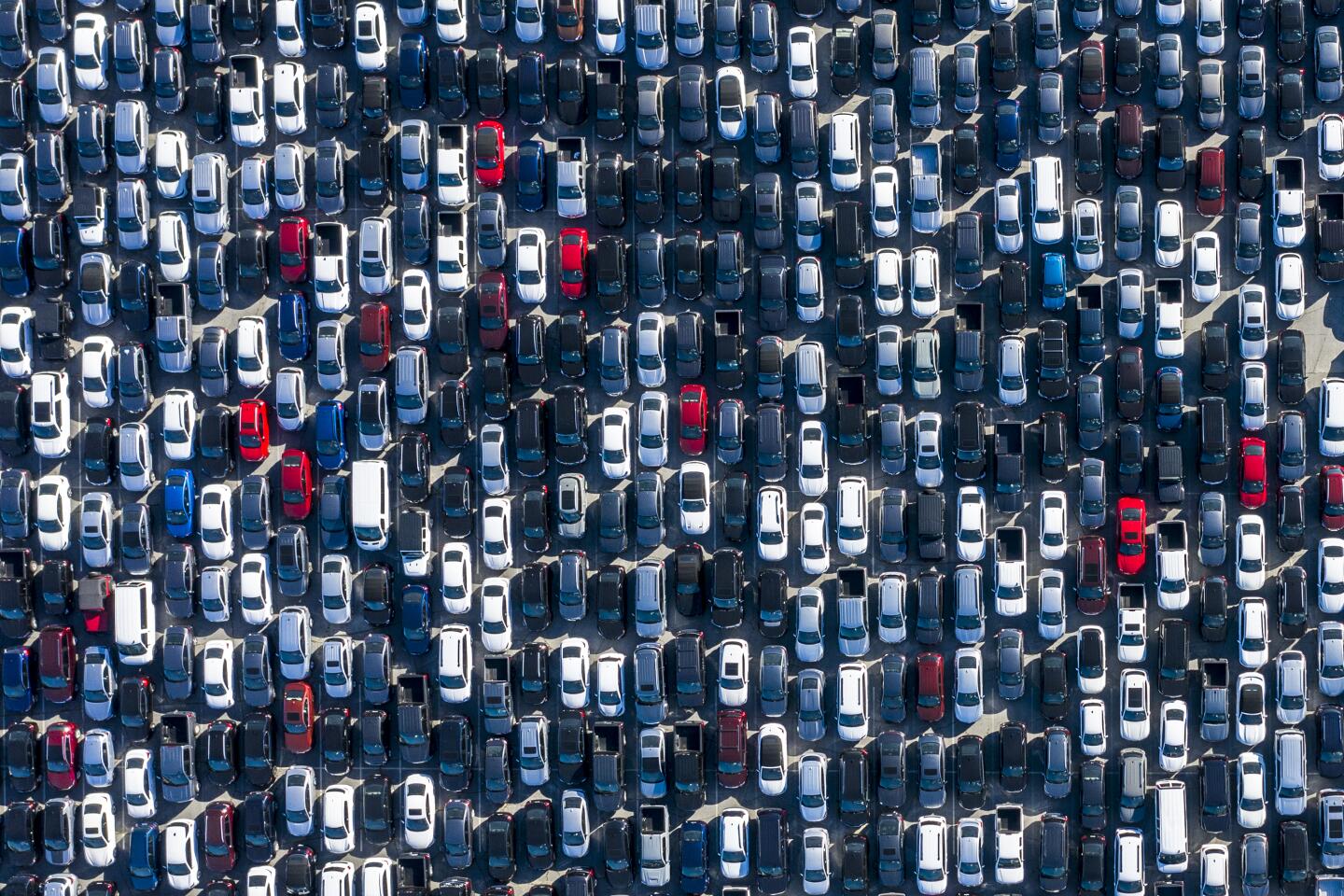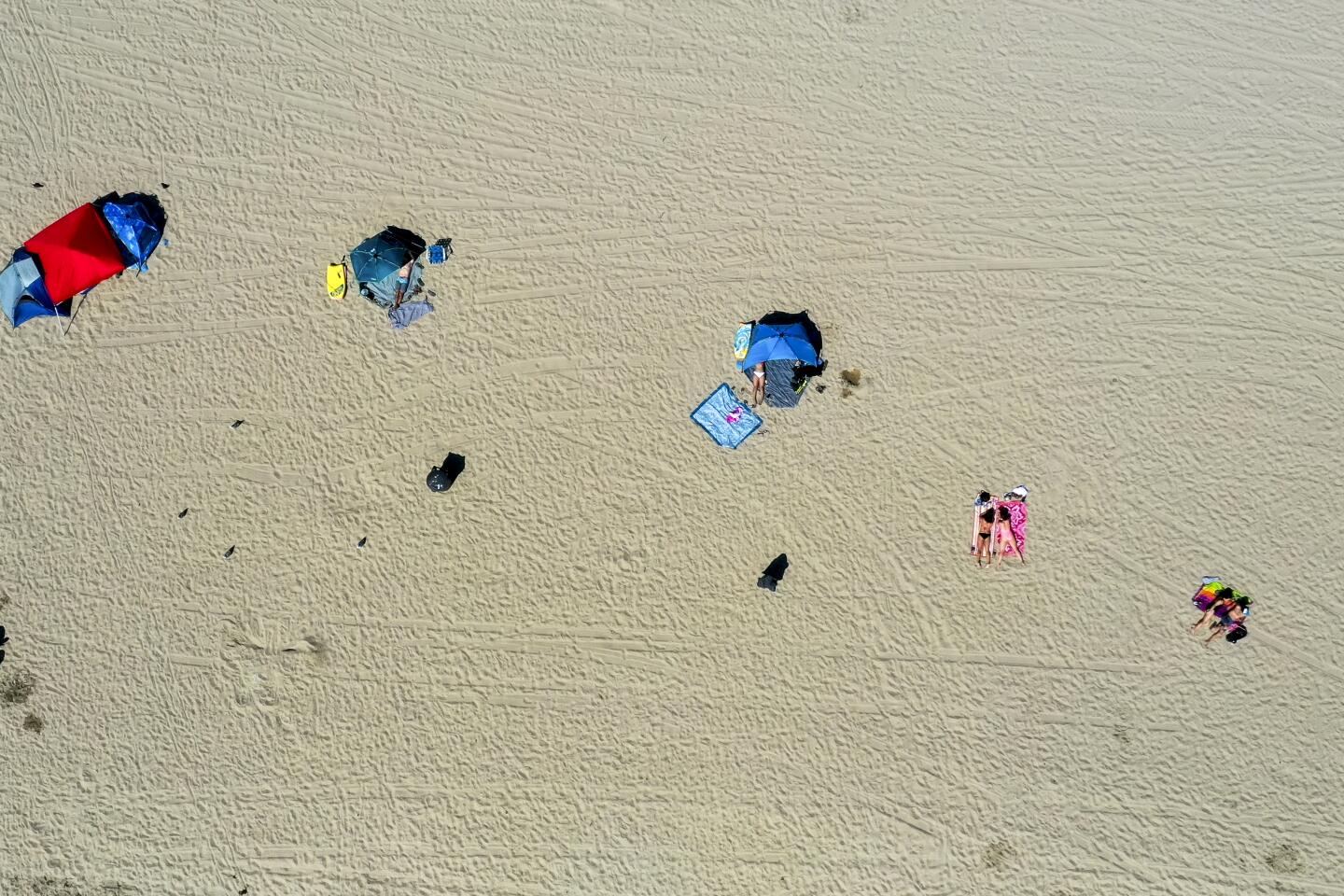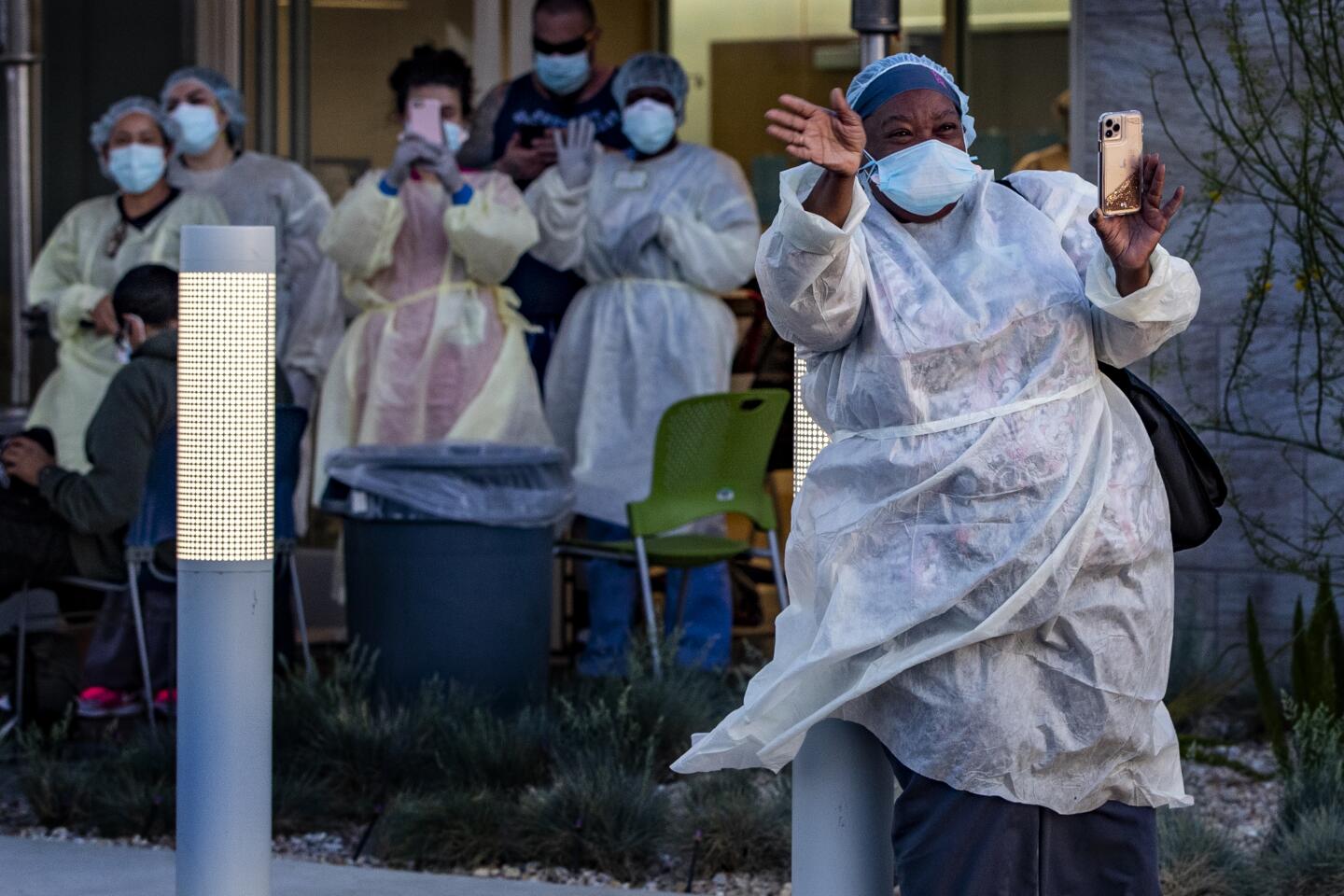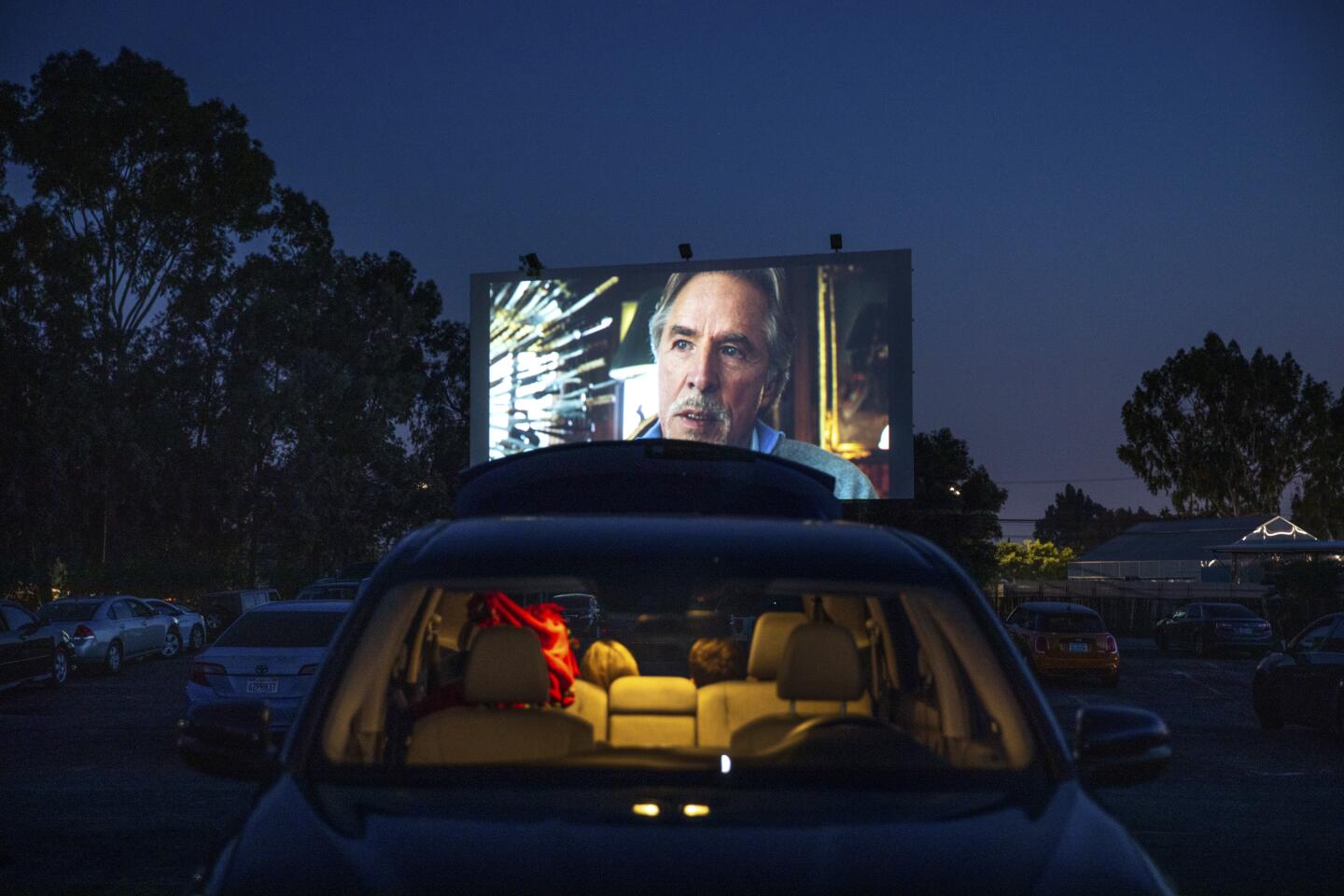Who gets the blame if California sees major new coronavirus outbreaks with reopening?
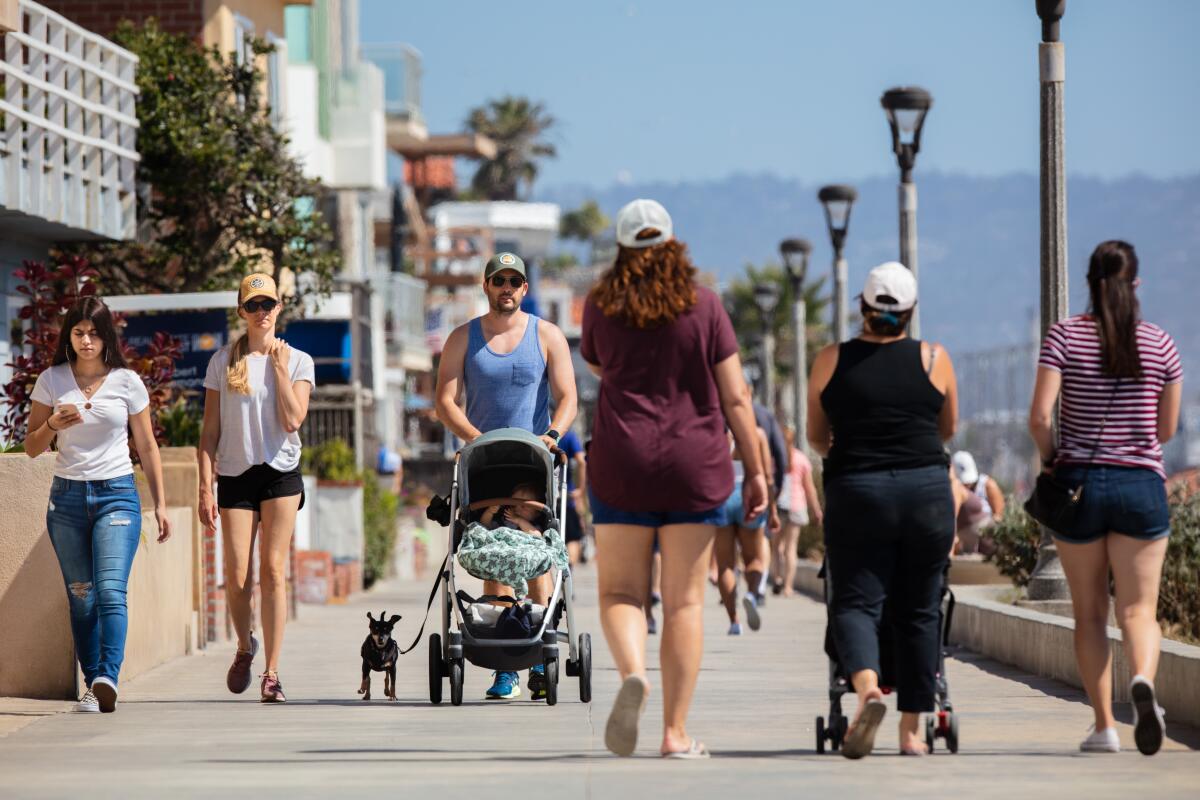
- Share via
The order from Orange County’s health officer was simple and far from radical: Residents should wear cloth face coverings while in a public place, at work or visiting a business to protect against the spread of coronavirus.
But almost immediately, Dr. Nichole Quick faced a fierce backlash from residents and some elected officials, who questioned the need for masks. People came to a Board of Supervisors meeting carrying a poster with Quick’s photo on it with a Hitler mustache on her face and swastikas. Then, she got a death threat, and required a security detail.
Amid mounting criticism, Quick resigned this week, a seeming political casualty as California attempts to revive its economy while preventing new outbreaks of COVID-19, the disease caused by the coronavirus.
Some officials insist the increasingly rapid reopening of the economy in California over the last few weeks has been driven by careful health considerations. But there are also political pressures as well. Some businesses battered by months of stay-at-home orders are pushing to open their doors, while some residents object to the government telling them to wear masks and how far apart to stand from each other.
At the same time, there is the question of who gets blamed if the pace of reopening leads to a major surge of cases and deaths.
Los Angeles County remains one of the hardest-hit counties in California, with more than 2,700 dead, comprising more than 57% of the state’s death toll, despite being home to one-quarter of the state’s population. Yet the nation’s most populous county is moving faster than the San Francisco Bay Area in reopening.
Gov. Gavin Newsom has emphasized that the decision to reopen on an accelerated pace is one made by local leaders.
“Let me just clarify something: The local health director made the decision in L.A. today. The state of California did not,” Newsom said on May 29 when L.A. County filed paperwork with the state that allowed it to reopen restaurants for in-person dining and hair salons. “That question is foundationally a question for local health directors and local county officials.”
Top officials in L.A. have pointed to Newsom’s guidelines as part of the reason they felt it was the right time to proceed. Mayor Eric Garcetti said at the time deaths and hospitalizations have been trending down in L.A. County, and it’s important to care both about public health and economic strain.
The chairwoman of the L.A. County Board of Supervisors, Kathryn Barger, said in an interview that county leaders take responsibility for the local reopening strategy.
The state “gave us a green light. But he’s right. I mean, ultimately, it’s up to our public health officer,” she said. “Everything we’ve done has been based on the data brought forward by [the Los Angeles County Department of] Public Health, and that’s been brought forward based on the criteria set by the state,” she said. “And this board has been very careful to make sure that we do it in a deliberate and careful fashion, based on public health.”
Only time will tell whether L.A. County is moving too fast.
There is no steady narrative of what’s going on: County scientists say the effective transmission rate of the disease has increased recently. The number of weekly cases diagnosed last week fell 12% compared with the previous week.
But for the first time in weeks, there was no significant decrease in weekly hospitalizations due to the coronavirus.
And weekly deaths in Los Angeles County rose 12% last week compared with the previous week.
The vast majority of Californians are still vulnerable to getting infection. The latest study estimating the percentage of the population who hasn’t yet been infected in L.A. County suggests as much as 98% of people in the nation’s most populous county have not yet been infected with the coronavirus, which is deadlier and more infectious than the seasonal flu.
Barbara Ferrer, director of public health for L.A. County, has defended the region’s reopening plan, but said residents and businesses need to follow safety rules.
“At some point, we have to reopen,” Ferrer said. “The name of the game is to make sure that when sectors are reopening, we’re taking every single precaution we can.”
Dr. Peter Chin-Hong, professor and infectious-diseases specialist at UC San Francisco, said while reopening restaurants doesn’t make him nervous, the idea of resuming large gatherings, such as congregations meeting at churches, gives him cause for concern.
“It’s really about the size of the crowd,” Chin-Hong said. People should be circumspect about having vulnerable people such as the elderly and people with cancer, heart disease and other underlying conditions visiting reopened areas.
Super-spreading events that have transmitted the coronavirus to many people have occurred at churches, as well as other mass events, such as conventions and Mardi Gras celebrations.
Among 92 people who attended a church in Arkansas in early March, 35 were confirmed to be infected, and three died; the first two people found to be infected were the pastor and his wife, according to a report published by the Centers for Disease Control and Prevention.
The San Francisco Bay Area is taking a much slower, gradual approach, and is opening only outdoor dining as an interim step before opening indoor dining.
In Northern California’s most populous county and the home to Silicon Valley, Santa Clara County, only outdoor dining and outdoor religious services were allowed to resume last Friday, along with in-store shopping. Hair salons were not allowed to reopen.
Dr. Sara Cody, the Santa Clara County health officer, said infection rates across the county have been low and have been stable for some time. However, there has been a slight bump up in coronavirus hospitalization numbers, likely related to Santa Clara County’s modest reopening efforts in mid-May, where stores reopened for pickup service, Cody said Monday.
Cody has faced some criticism for her cautious approach to reopening, but not to the degree her counterpart in Orange County, Quick, has experienced.
Her mask order in late May faced immediate challenge from residents and elected officials who questioned the need for the widespread use of face coverings as businesses in the region reopened. That ire at times was directly aimed at Quick.
The Orange County Sheriff’s Department provided a security detail for Quick after she received what officials deemed to be a death threat during a county Board of Supervisors meeting last month.
During the meeting, a woman who identified herself as an attorney disparaged Quick’s experience in the medical field and read her home address aloud, saying she planned to take a group to Quick’s home and “do calisthenics in masks on her front doorstep” in an attempt to prove that face coverings are unsafe.
The woman echoed what other critics had said about face coverings posing a danger to people’s oxygen levels. The Centers for Disease Control and Prevention has previously said that children younger than 2 and anyone with a breathing issue should not wear a face covering.
“When people start dropping like flies, and they will,” the woman said at the meeting, “I am going to ask every first responder in a 30-mile radius to roll lights and sirens to her front door, and you had best pray they can revive whoever went down because if they can’t … I will be asking the O.C. D.A.’s office to charge it as murder.”
Later that week, Orange County Board of Supervisors Chair Michelle Steel condemned the threat, saying, “It should never happen again.”
“No one deserves to be threatened or intimidated the way she was,” Steel said at the time.
Health experts say face coverings can help slow the spread of the coronavirus by keeping infectious oral droplets of an infected person from spraying out while talking to others.
Quick, who was hired as the county’s health officer last June, could not be reached for comment Tuesday.
The county agreed to pay Quick $75,000 in severance in exchange for her decision to voluntarily resign, according to a settlement and release agreement signed Monday.
The agreement notes that County Executive Officer Frank Kim won’t disparage work done by Quick while she was employed with the county. In exchange, Quick agreed not to criticize the county or the Board of Supervisors.
Kim characterized the agreement Tuesday as “fairly standard practice for the county” when it comes to executive-level employees.
“I had a very good working relationship and I thought she did very good work for the county as our health officer,” he said during a phone call with reporters.
Kim added that he was surprised and disappointed by Quick’s resignation. He said neither he nor any of the members of the Board of Supervisors encouraged her to resign.
He declined to elaborate on her reasons for doing so, aside from saying, “I do believe that all of the challenges of the job weighed in on her decision.”
As of Tuesday night, 185 people have died in Orange County from the coronavirus. There was an average of nearly 400 people in Orange County hospitalized with confirmed or suspected coronavirus infections every day last week, up from nearly 300 in early May.
Times staff writers Iris Lee, Joseph Serna, Colleen Shalby and Phil Willon contributed to this report.
More to Read
Sign up for Essential California
The most important California stories and recommendations in your inbox every morning.
You may occasionally receive promotional content from the Los Angeles Times.
